Chemistry and Chemists № 3 2023
Journal of Chemists-Enthusiasts
| Content №3 2023 Content №1 2024 | Chemistry experiments - video | Physics experiments - video | Home Page - Chemistry and Chemists |
|
Chemistry and Chemists № 3 2023 Journal of Chemists-Enthusiasts |
Flowers change colour: effect of alkalis and acids on plant dyes - pt.18, 19 V.M. Viter |
|
Having noticed a mistake in the text, allocate it and press Ctrl-Enter
Red Prunus domestica (Plum), pink Grape, ammonia and nitric acid - pt.18
Experiments with the fruits of Prunus domestica, which had dark blue peel, did not end very effectively: Prunus domestica and ammonia [Link]. The same thing happened with dark blue grape: Dark blue grape and ammonia [Link].
I should repeat these experiments with other varieties of Domestic plum ("plum") and grape. As was planned, I took red fruits of plum and pink fruits of grape. First, let us experiment with plum. To be precise, the colour of the peel of the plum fruits varied, and the colouring was unevenly distributed (see photos), but some of the fruits were red. I used the peel from the red fruits. I placed the peel, removed from the fruit, into a glass with a concentrated ammonia solution. Then, I stirred the contents of the glass with a glass rod. The peel of the plum began to turn dark (outer side). The darkening occurred unevenly: first, isolated dark dots and dark areas appeared on the surface, which expanded. As a result, the peel of the plum turned brown. Now, let us experiment with the grape berries. The colour of the berries was also not always pink and often uneven, but these are details. I placed the grape peel in a glass and added a concentrated ammonia solution. Dark areas appeared on the pink surface, which increased over time. After a few minutes, the peel became dark (not the entire surface). I decided to experiment with juice squeezed from the berries of this grape variety. The juice was almost uncoloured (white with a greenish tint). I added a concentrated ammonia solution (drop by drop) to the grape juice. Then, I stirred the liquid. The juice turned yellow-green. In the experiment mentioned above, the juice from dark blue grapes also turned yellow-green when treated with ammonia. The difference is that the original colour of this juice was pink. So, we had grape juice that was initially almost white, but after adding ammonia (excess), it turned yellow-green. I continued the experiment and added concentrated nitric acid. Even before adding nitric acid, the pipette with the acid smoked as soon as it approached the solution containing ammonia. The amount of white smoke (ammonium nitrate) increased significantly during the addition process. The grape juice turned light brown (the excess of nitric acid). |
|
Слива домашняя (красная), розовый виноград, аммиак и азотная кислота - ч.18
Эксперименты с плодами Сливы домашней (Prunus domestica), которые имели темно-синюю шкурку, закончились не очень эффектно: Prunus domestica and ammonia [Link]. Аналогично получилось и с темно-синим виноградом: Dark blue grape and ammonia [Link]. Решил повторить данные эксперименты с другими сортами Сливы домашней (далее - "слива") и винограда. Как и планировал, взял красные плоды сливы и розовые плоды винограда. Сначала - слива. Если быть точным, цвет шкурки слив был различным, причем окраска распределялась неравномерно (см. фото), но некоторые плоды были красными. Я использовал шкурку именно с красных плодов. Снятую со сливы шкурку опустил в стакан с концентрированным раствором аммиака. Помешал стеклянной палочкой. Шкурка сливы начала становиться темной (внешняя сторона). Потемнение происходило неравномерно: сначала на поверхности появились изолированные темные точки и темные участки, которые расширялись. В результате шкурка сливы стала коричневой. Перейдем к винограду. Цвет ягод был также не всегда розовым и часто неравномерным, но это уже детали. Шкурку виноградины поместил в стакан, добавил концентрированный раствор аммиака. На розовой поверхности появились темные участки, которые увеличивались со временем. Через несколько минут шкурка стала темной (не вся поверхность). Решил поэкспериментировать с соком, выдавленным из ягод данного сорта винограда. Сок был почти неокрашенным (белым с зеленоватым оттенком). К соку винограда добавил концентрированный раствор аммиака по капле. Перемешал. Сок стал желто-зеленым. В упомянутом выше эксперименте сок темно-синего винограда также стал желто-зеленым под действием аммиака. Разница в том, что исходный цвет этого сока был розовым. Итак, у нас есть сок винограда, который изначально был почти белым, а под действием аммиака (избыток) стал желто-зеленым. Продолжил эксперимент и добавил концентрированную азотную кислоту. Еще до добавления азотной кислоты, пипетка с кислотой дымила от одного приближения к раствору, содержащему аммиак. В процессе добавления количество белого дыма (нитрат аммония) существенно увеличилось. Виноградный сок стал светло-коричневым (избыток азотной кислоты). |
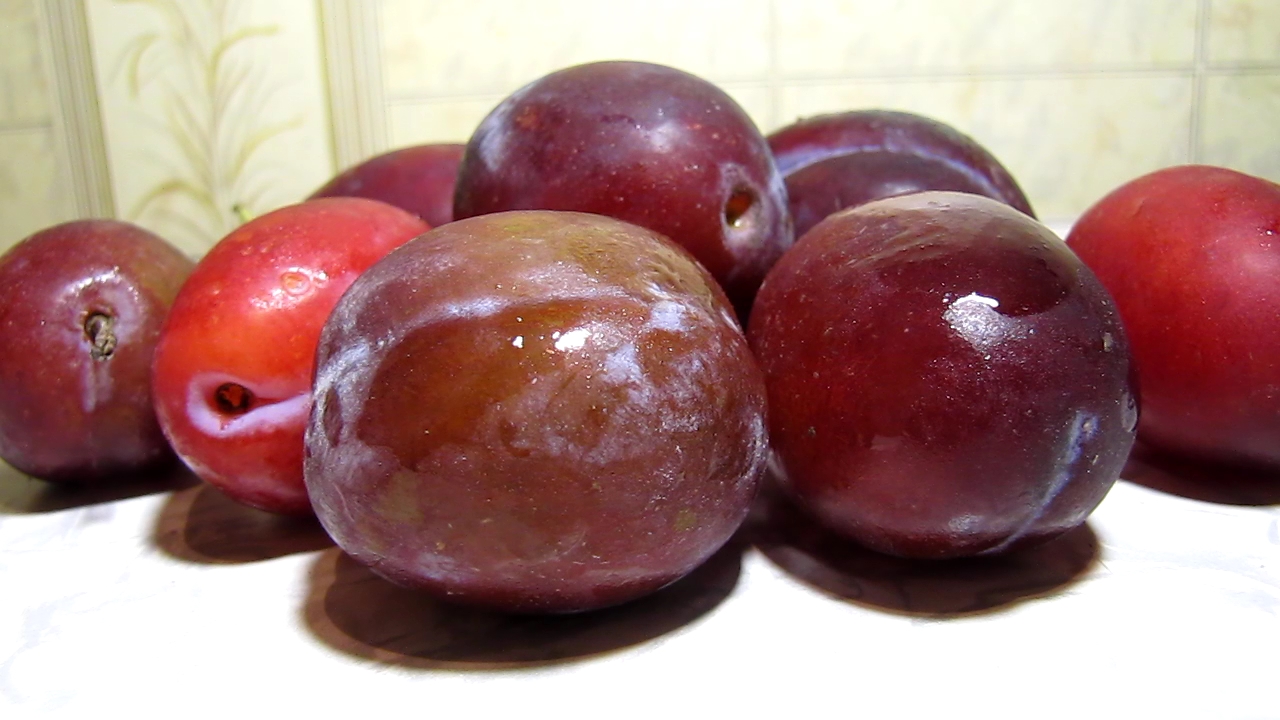
Red Prunus domestica (Plum) and ammonia |

|
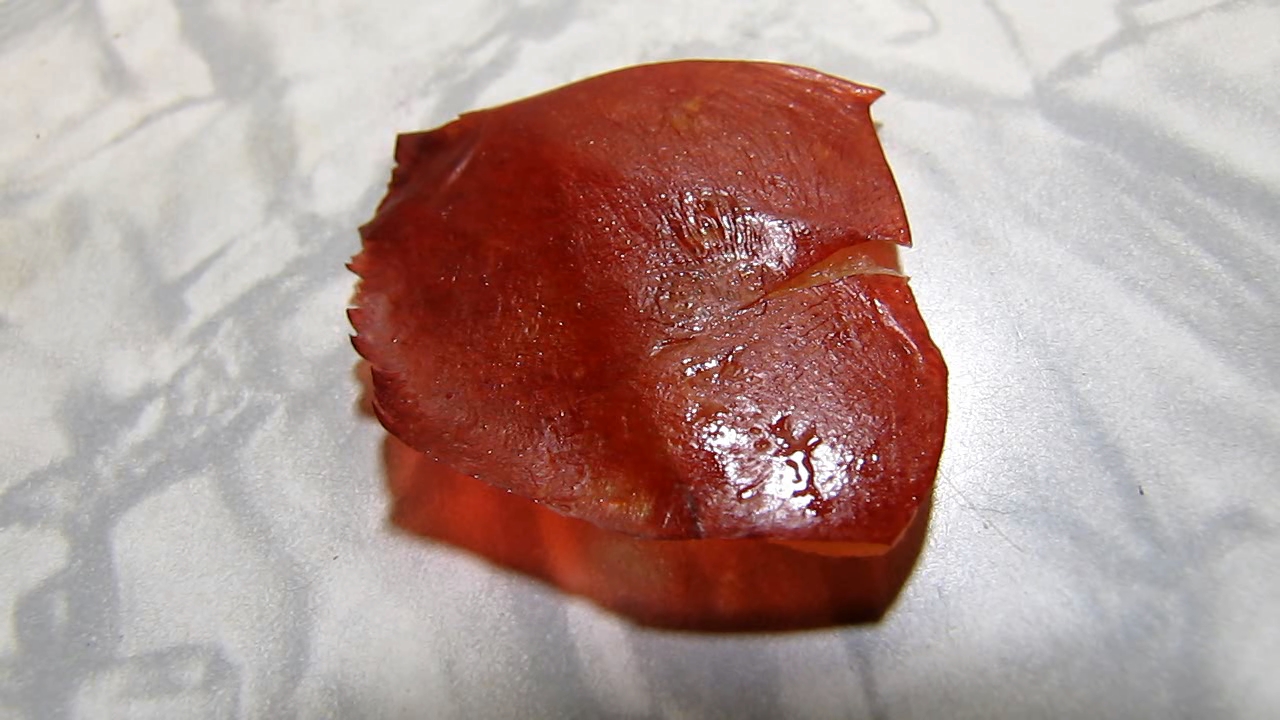
|

|
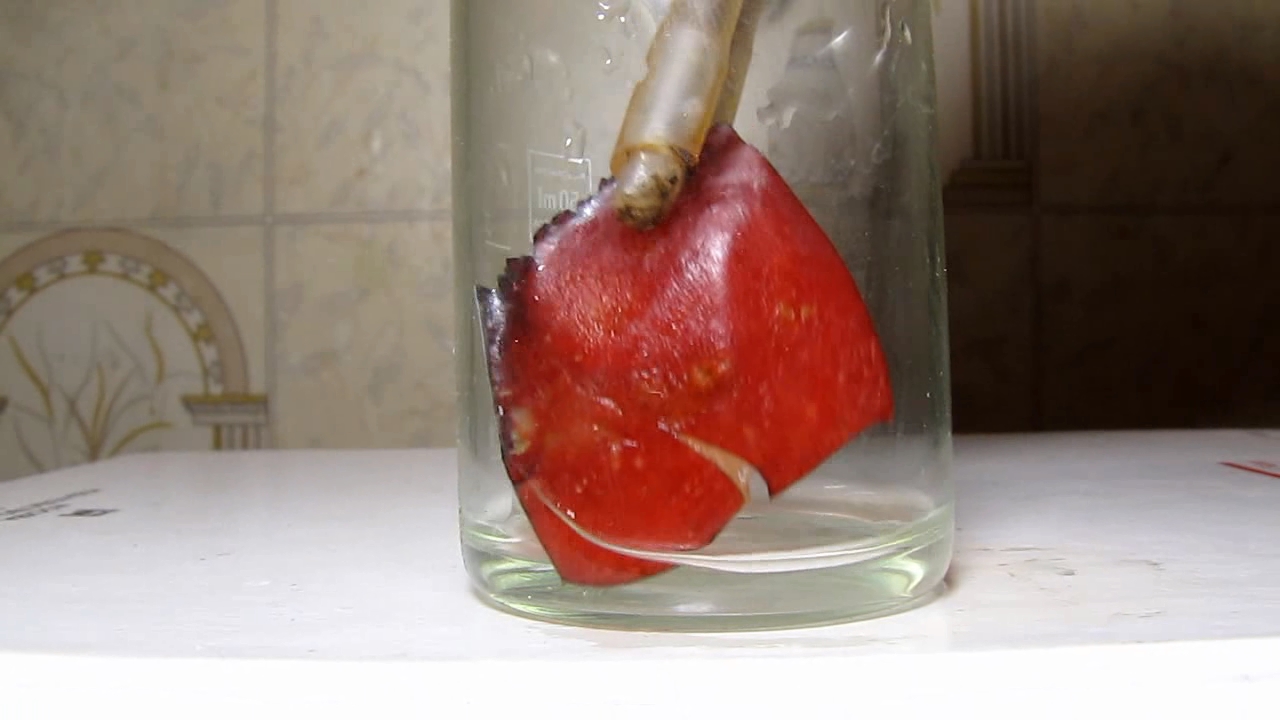
|
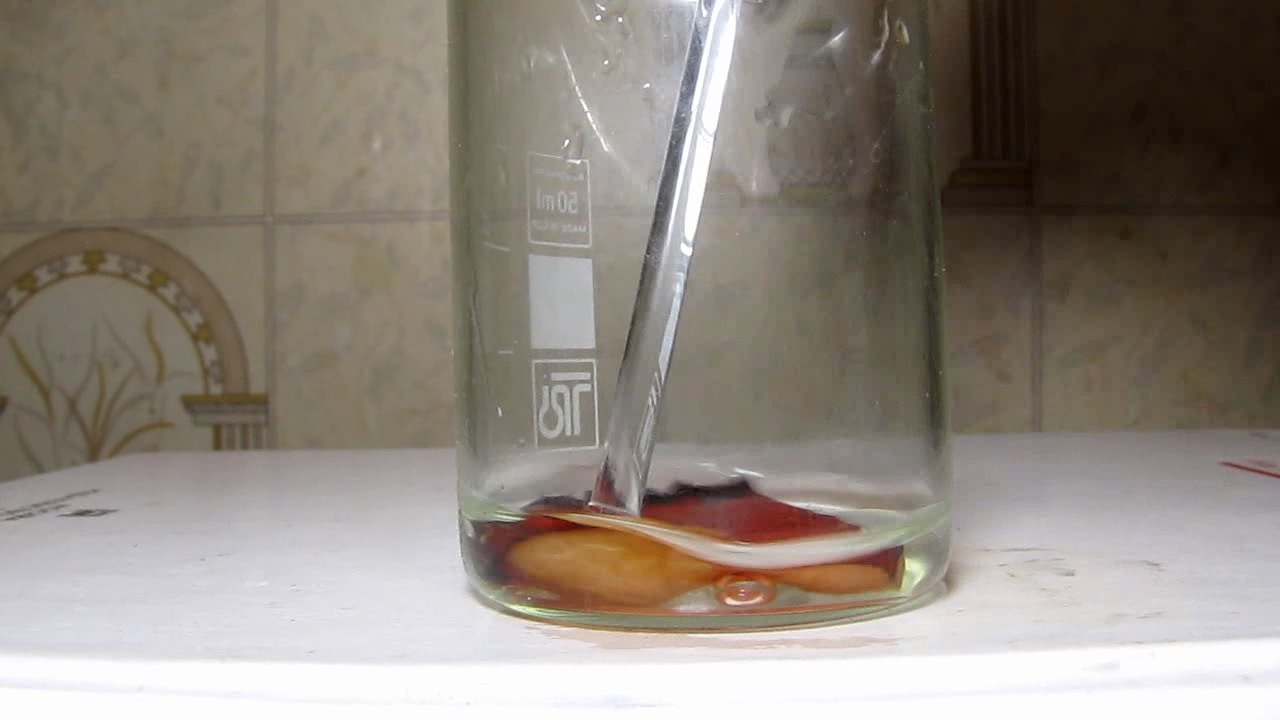
|

|
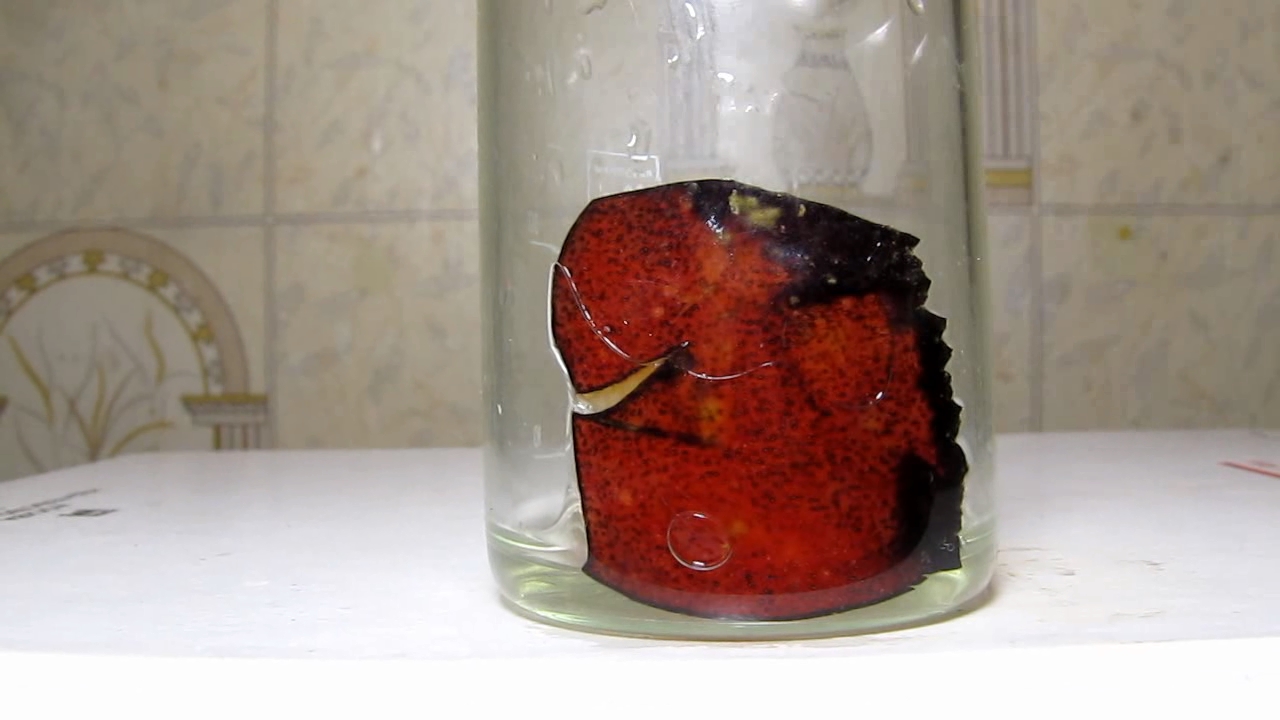
|

|
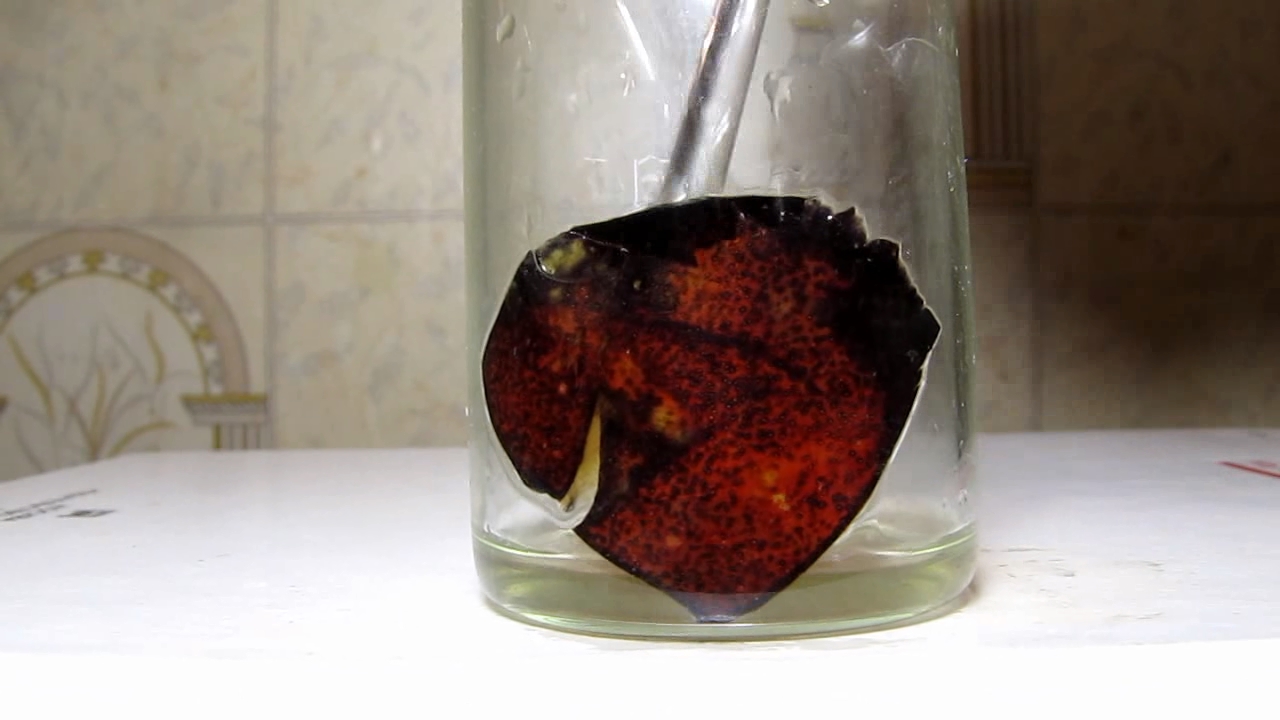
|
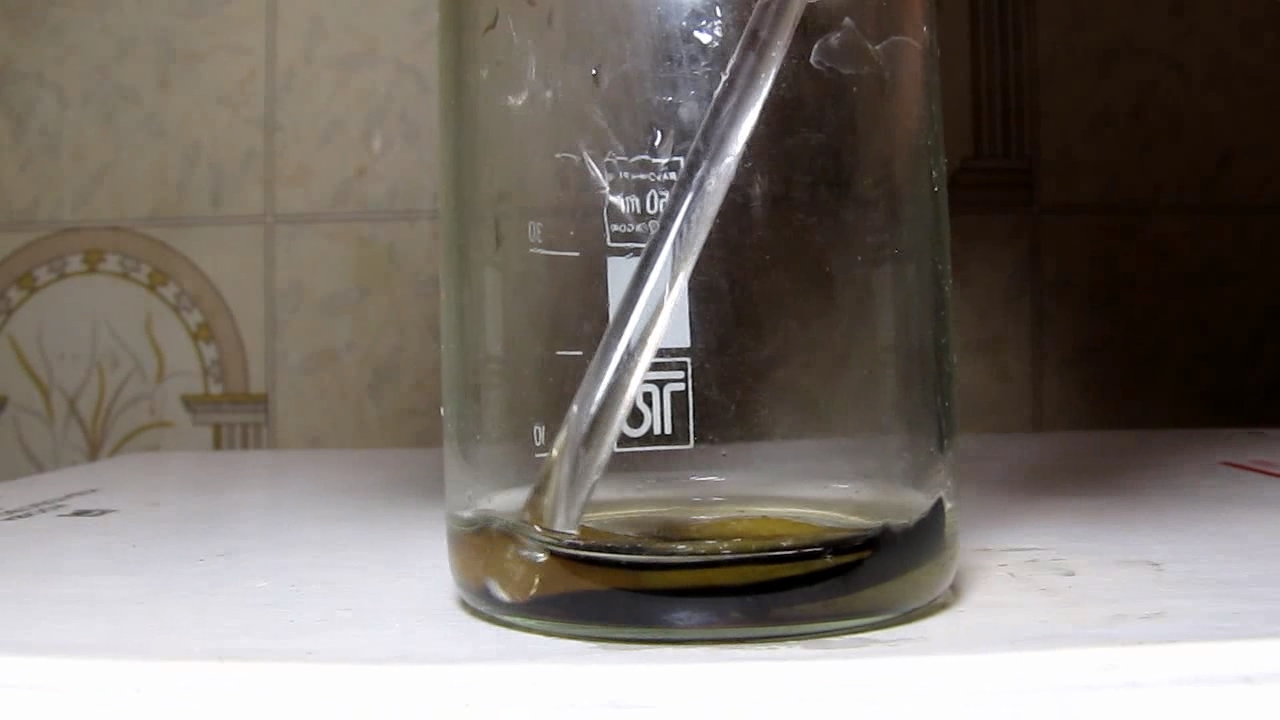
|
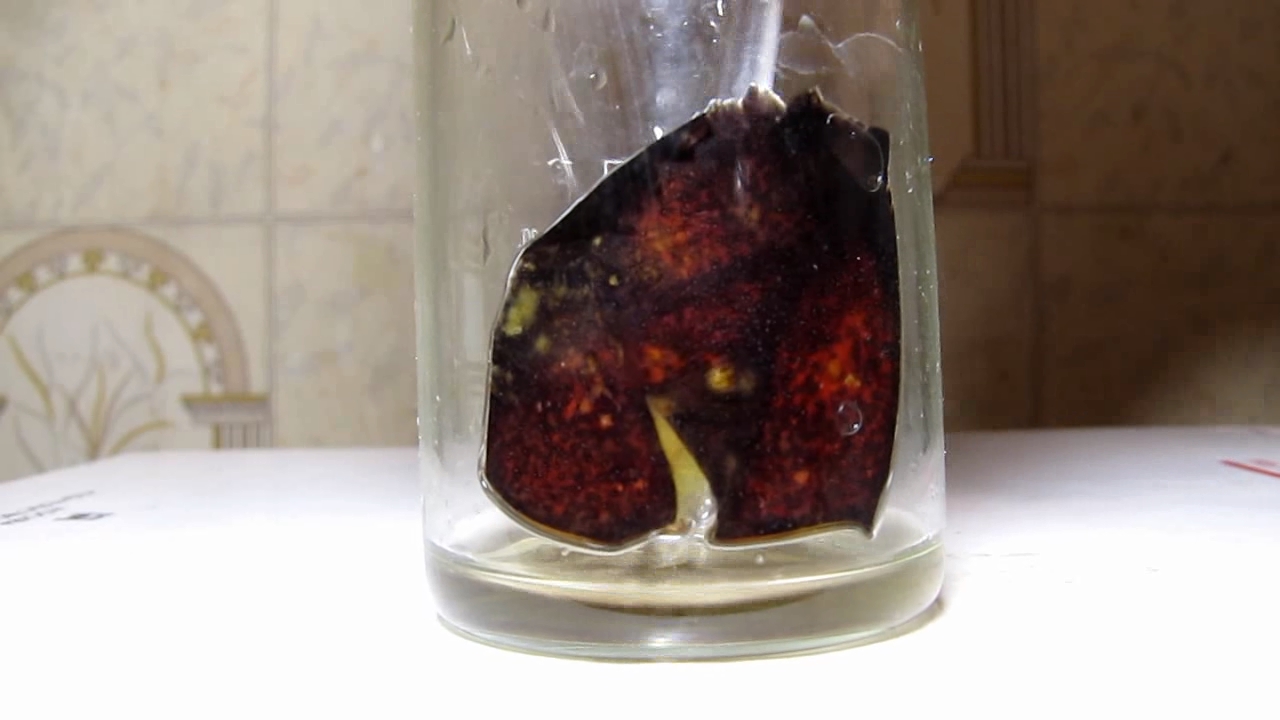
|

|
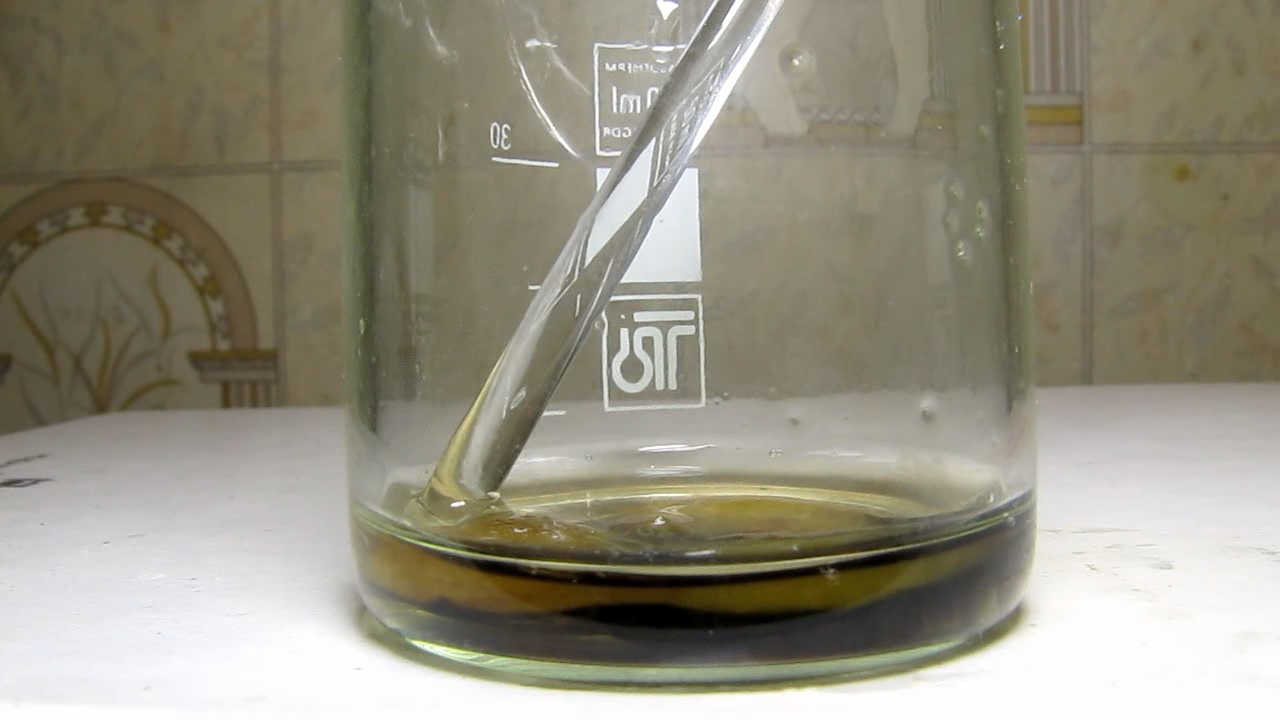
|
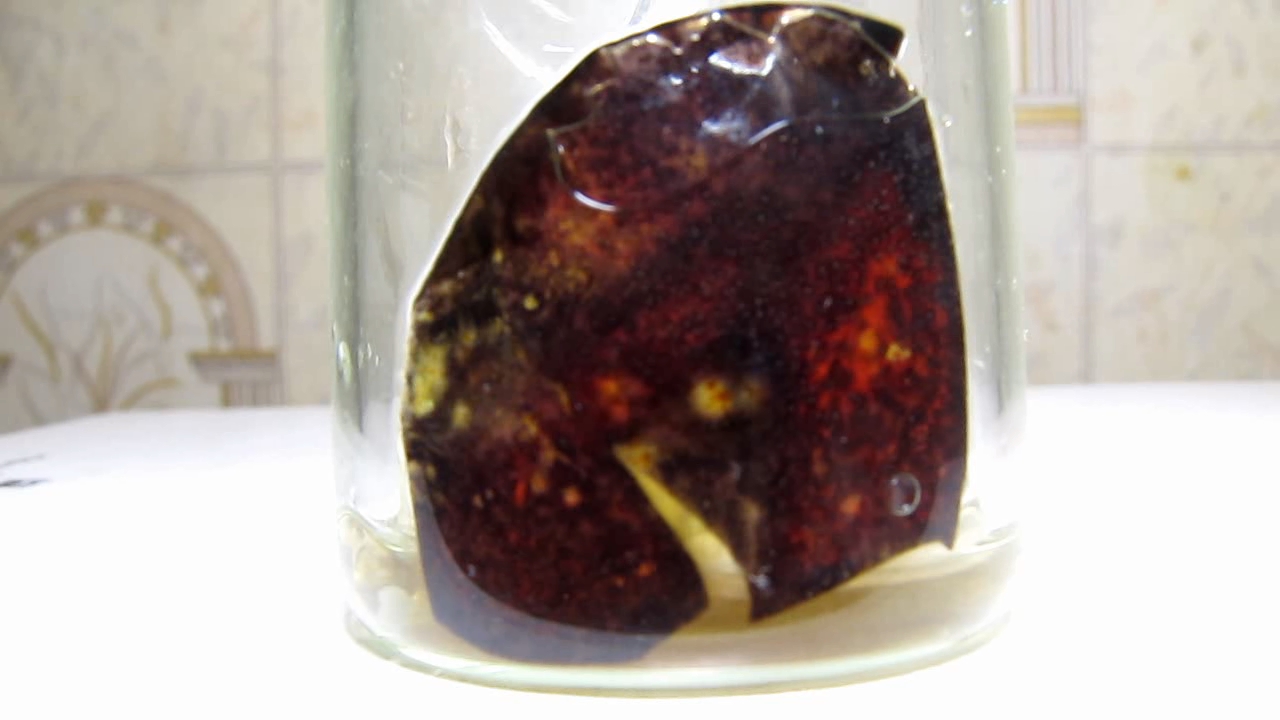
|
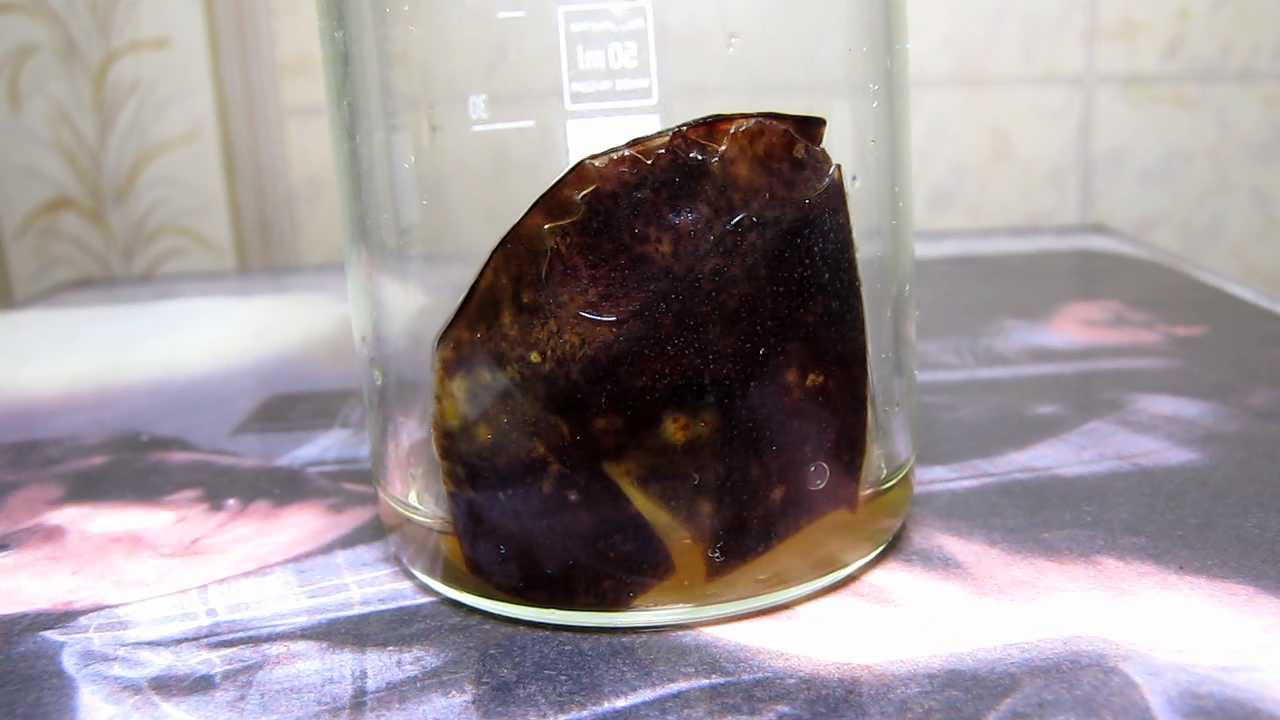
|
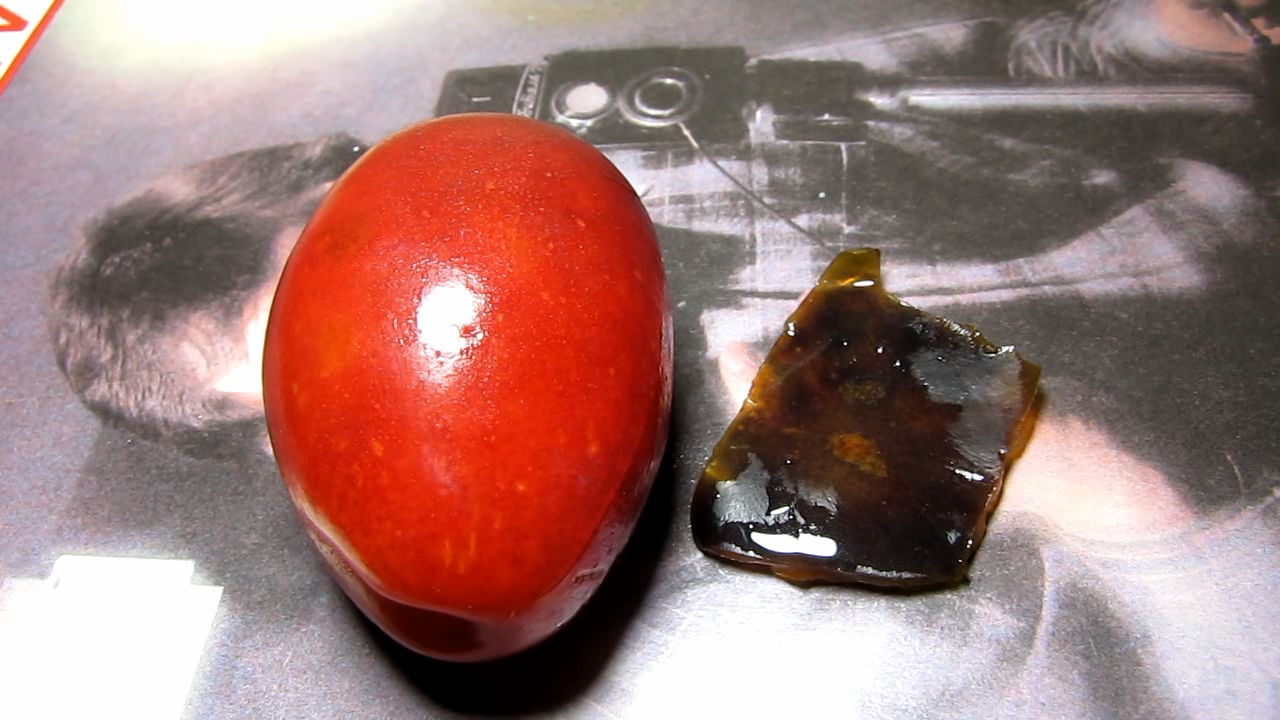
|
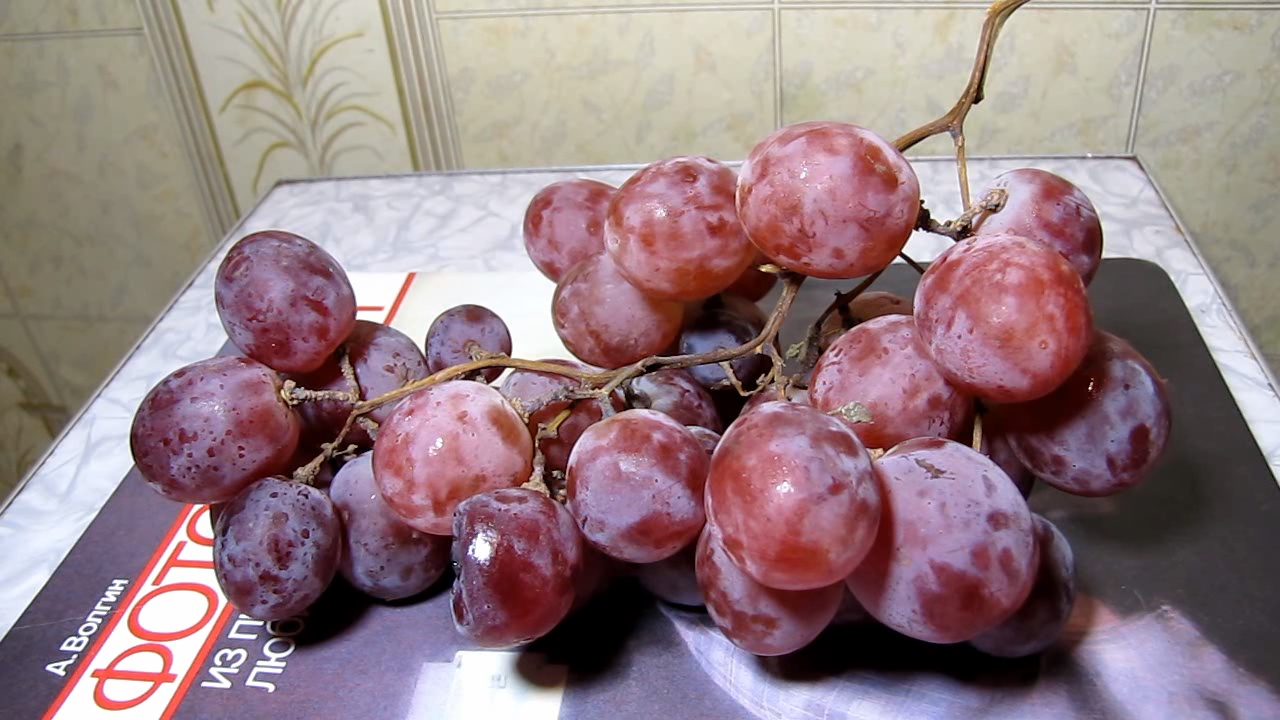
Pink Grape and ammonia |
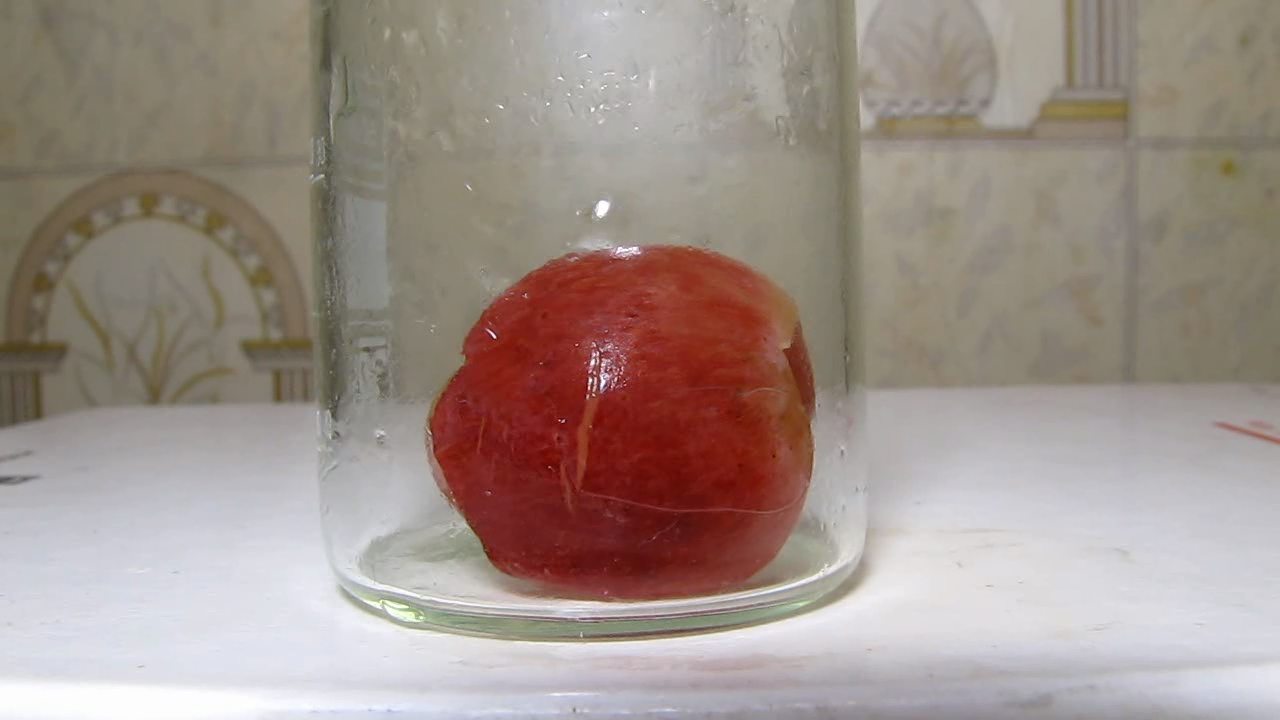
|

|
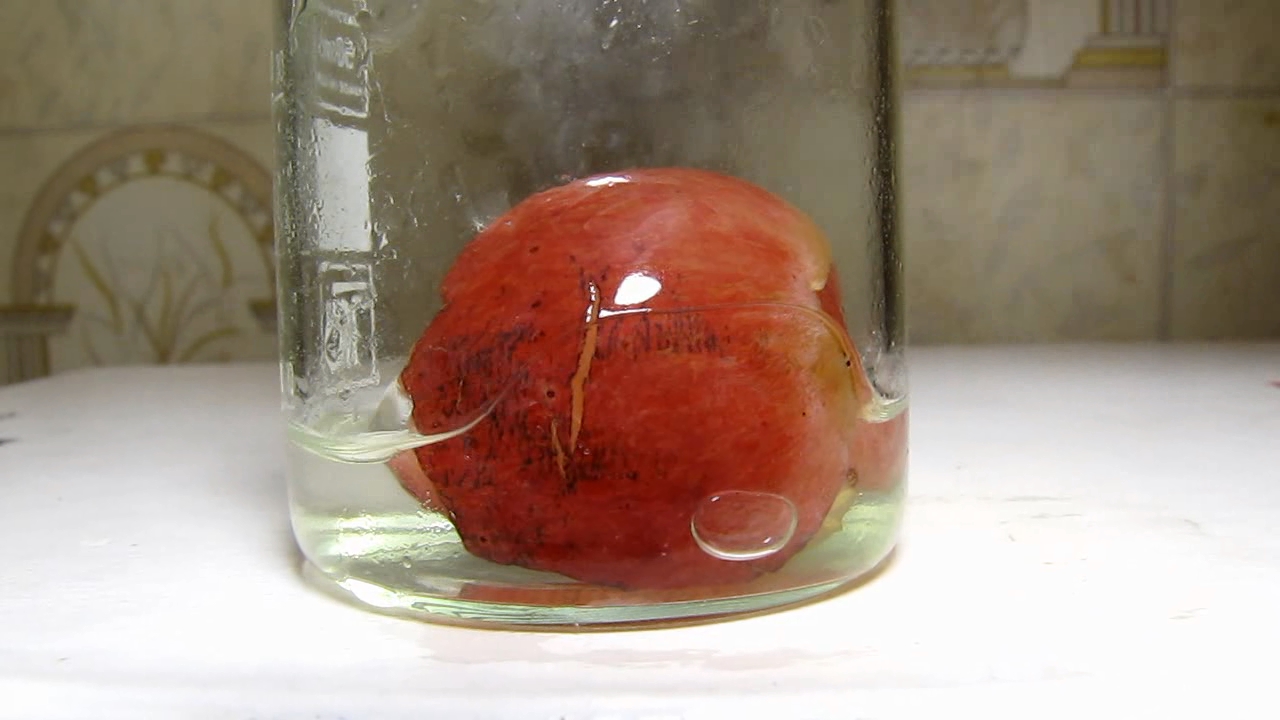
|
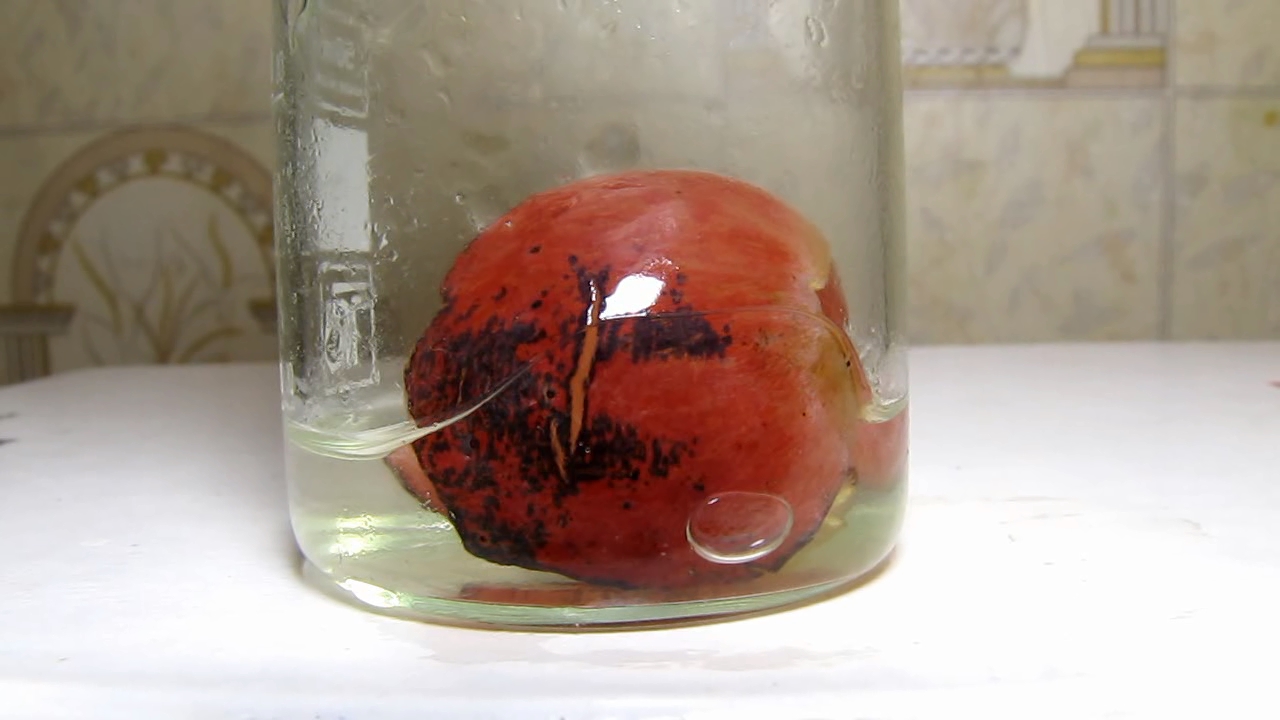
|

|
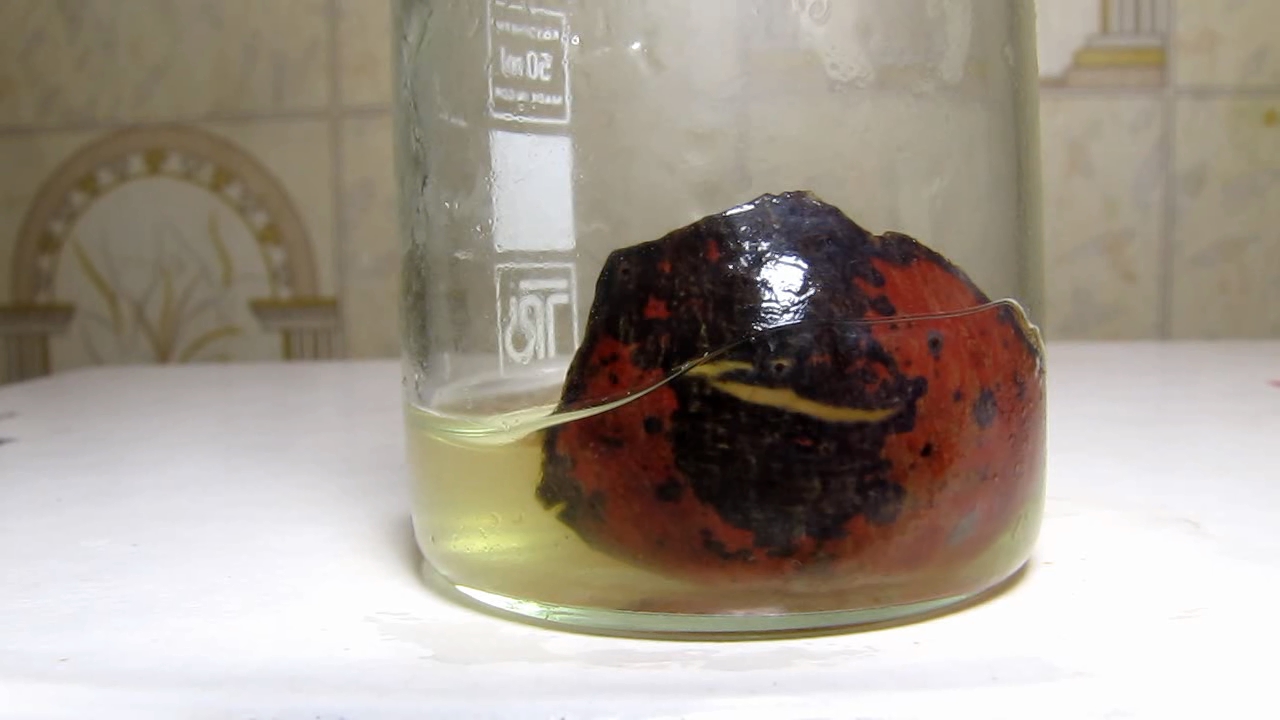
|
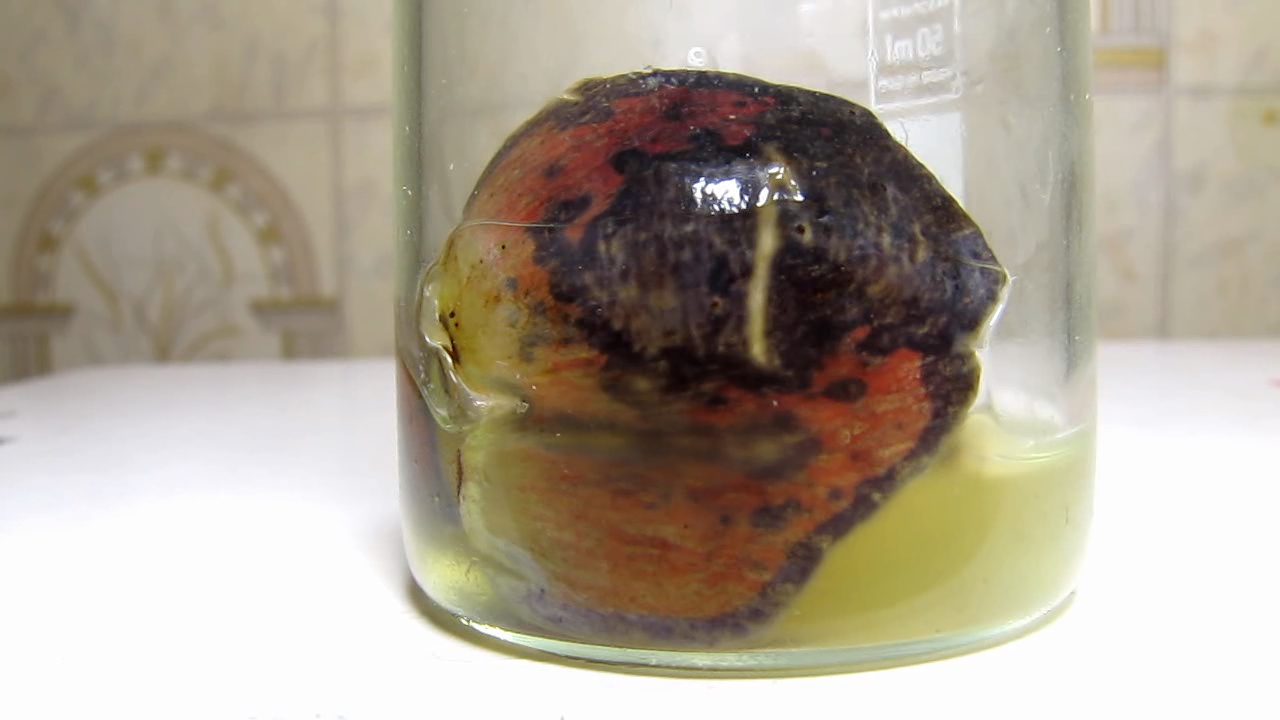
|

|
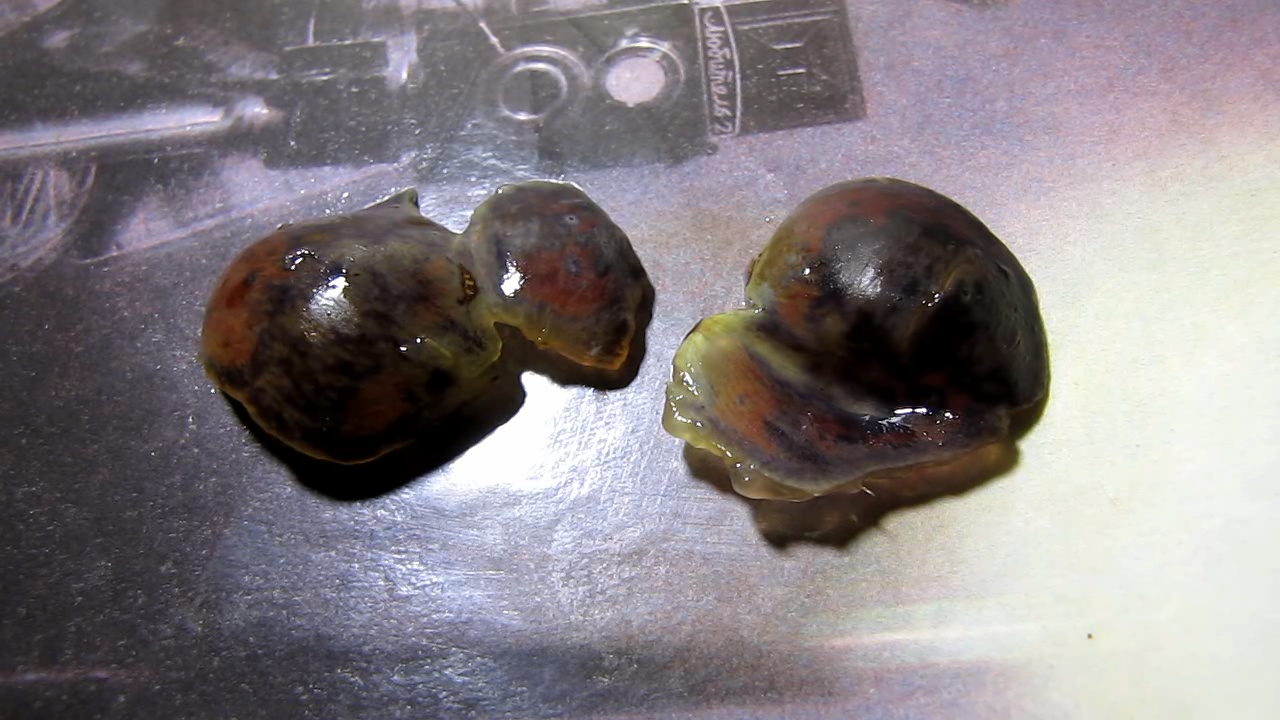
|
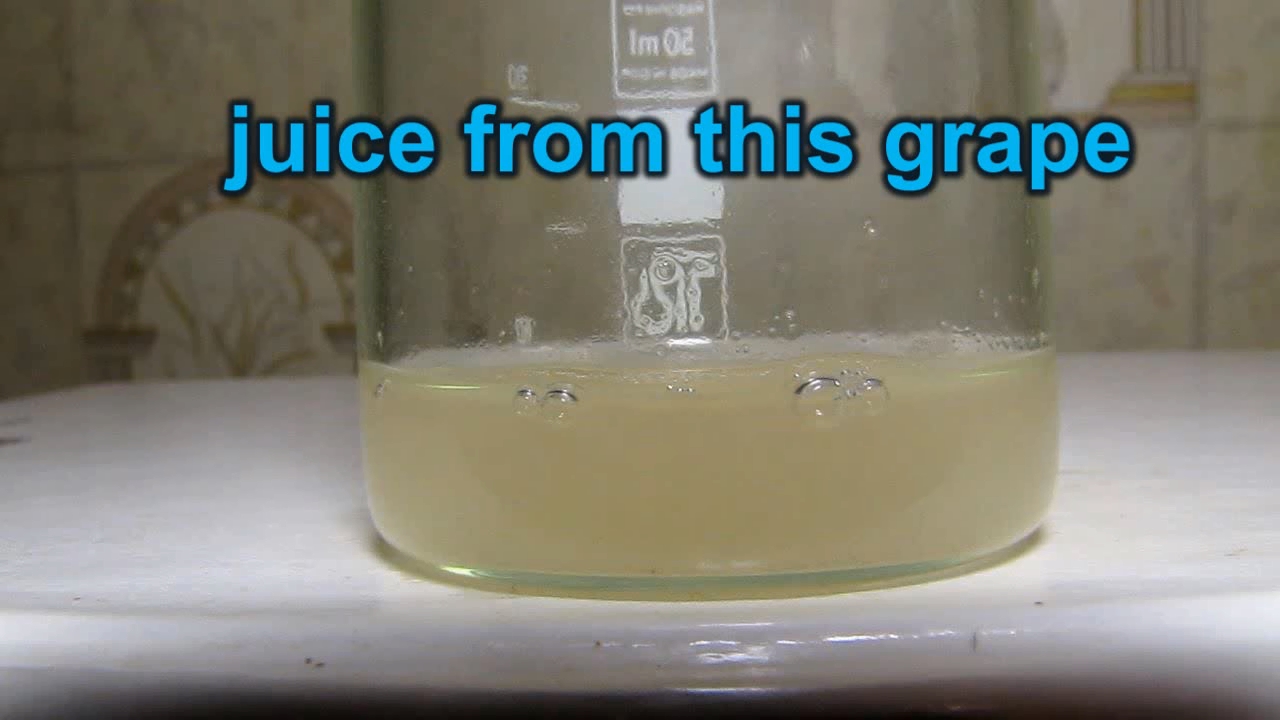
Grape juice and ammonia |

|

|
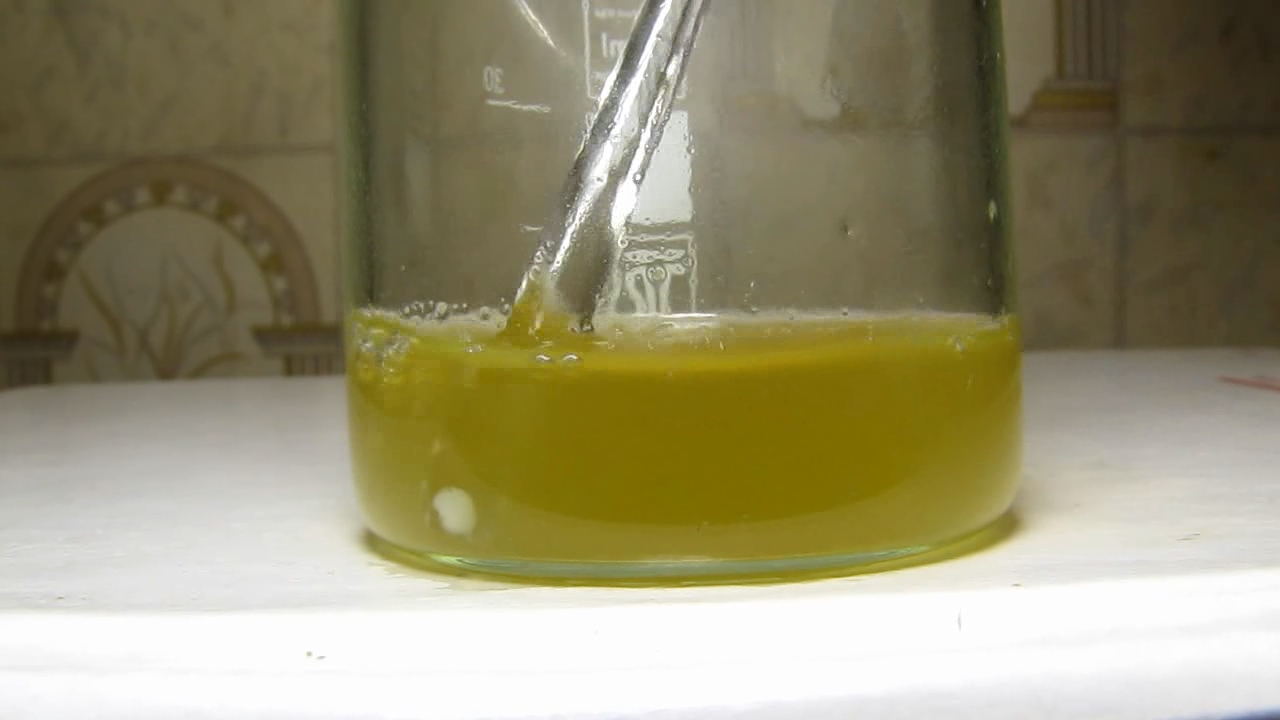
|
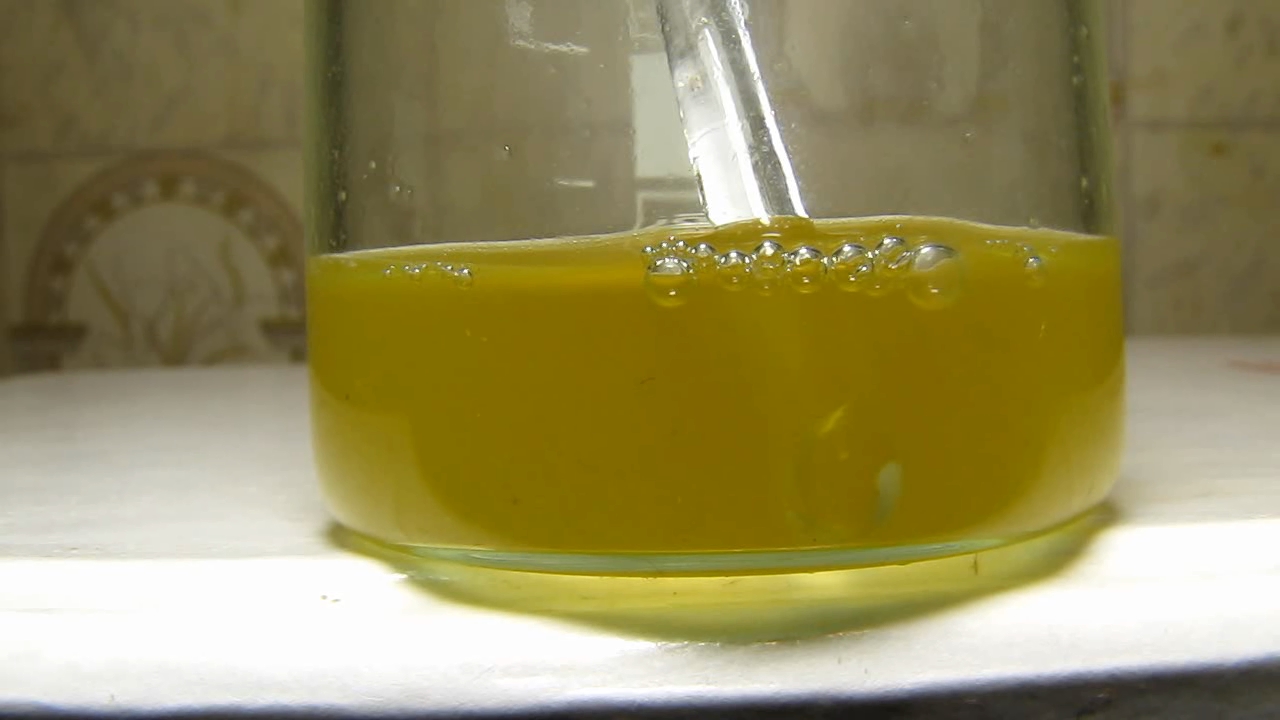
|
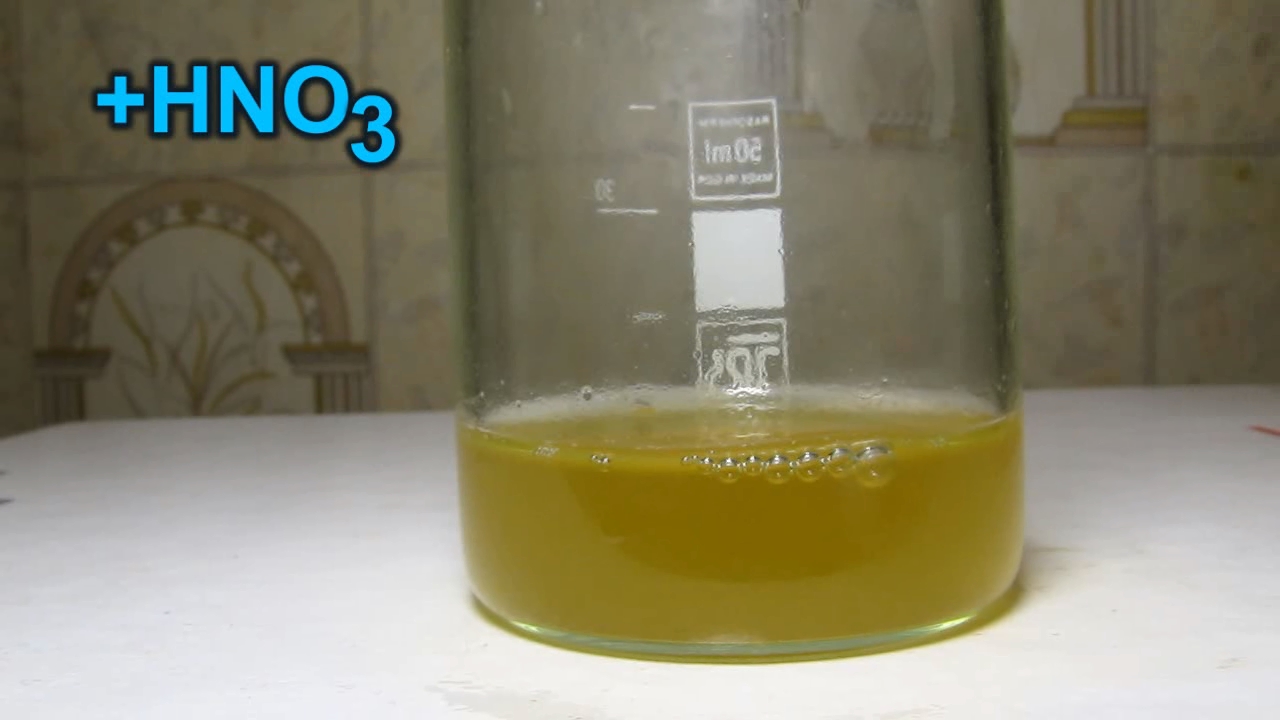
Then, nitric acid was added |

|
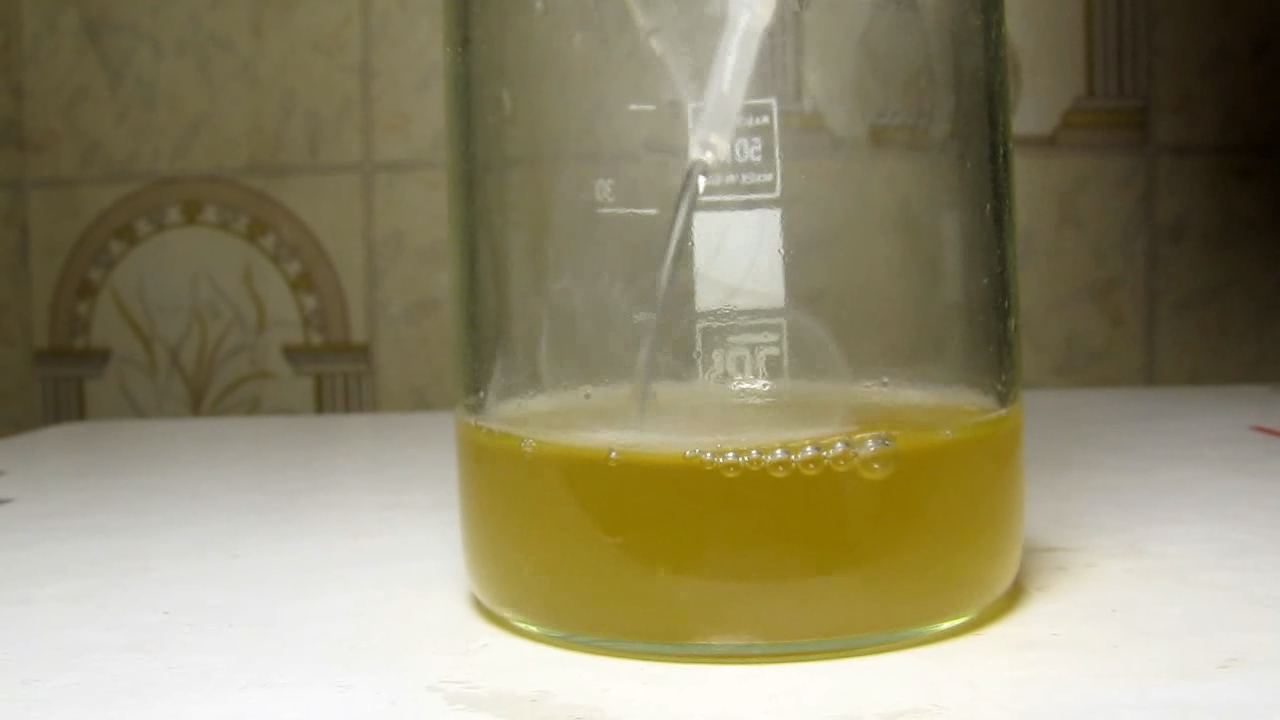
|
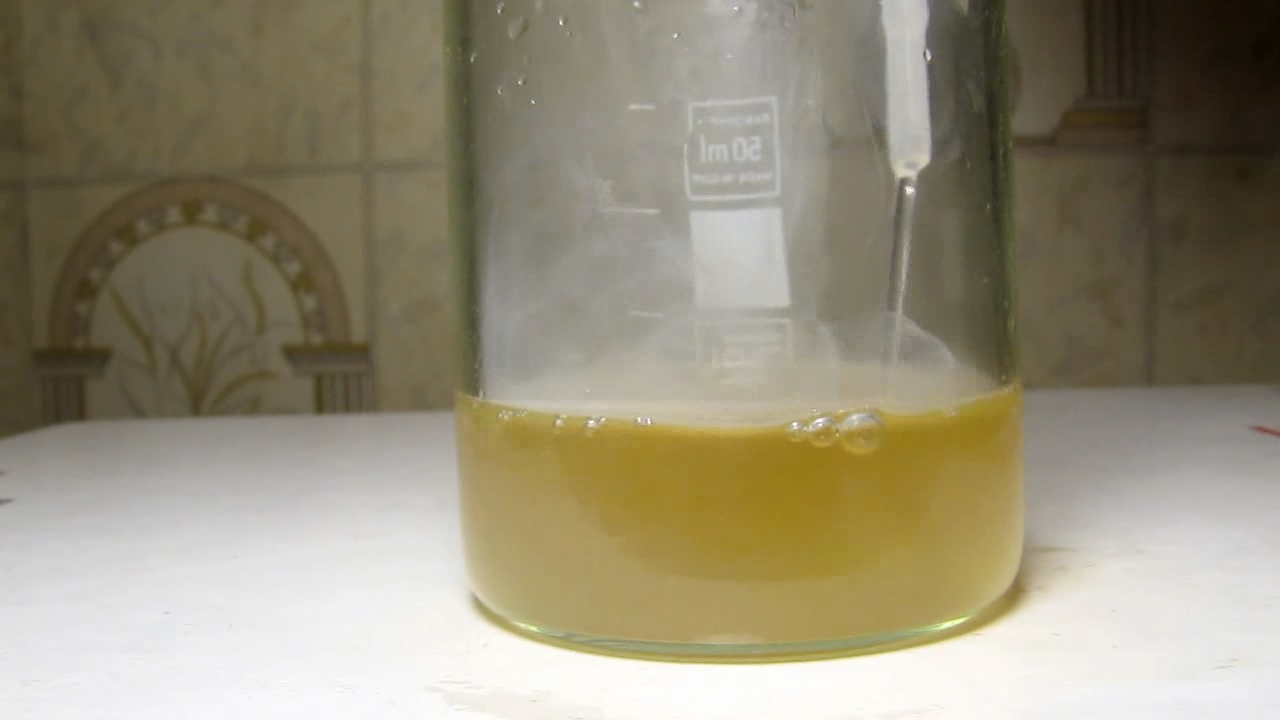
|
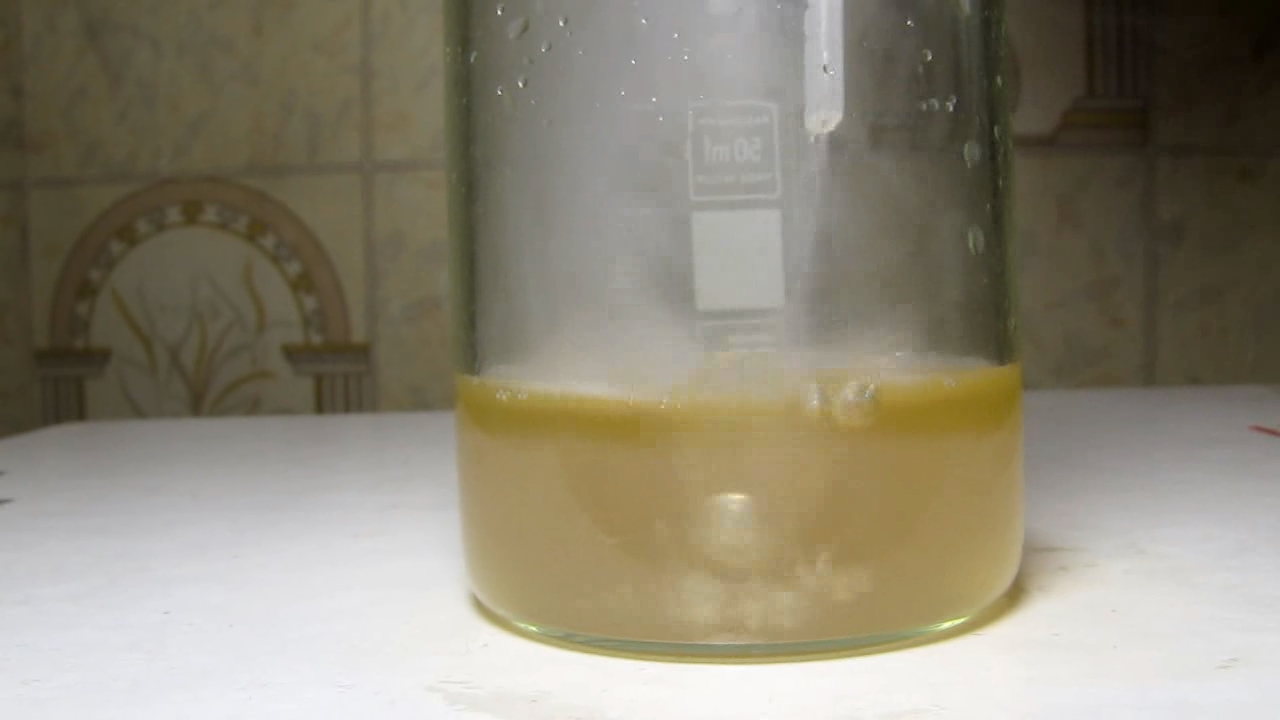
|

|

|
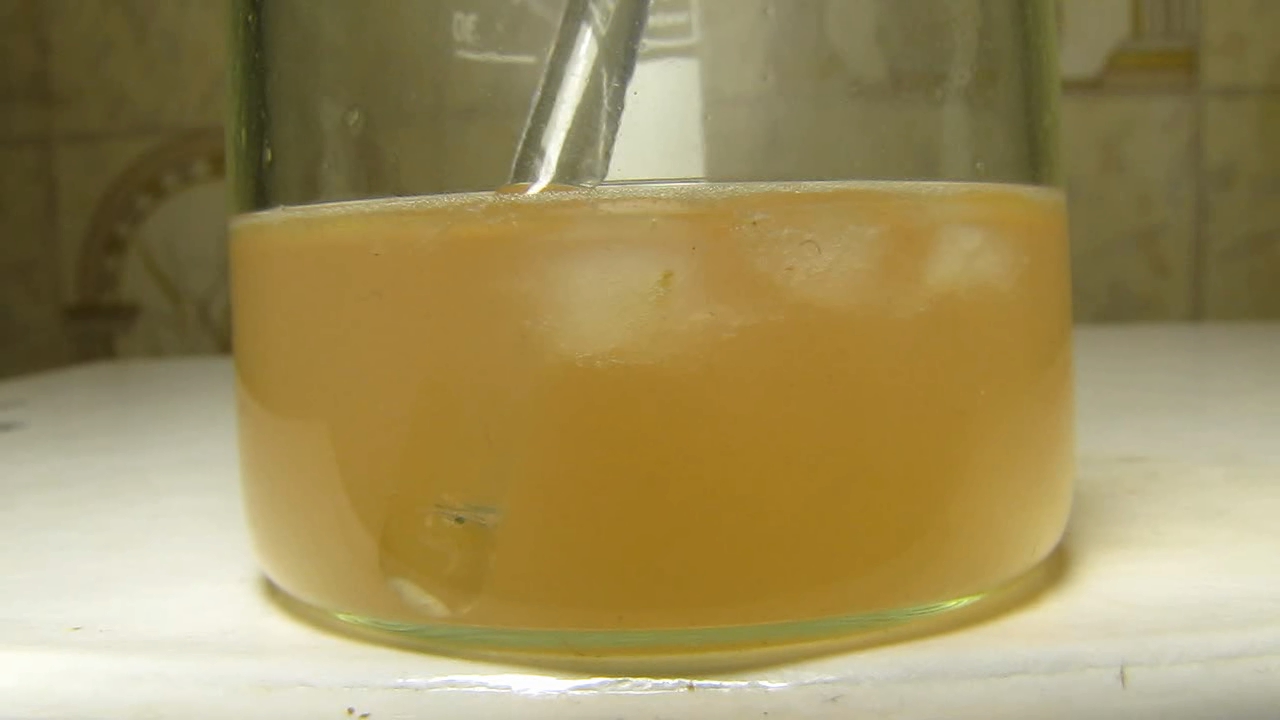
|
|
Red apple and ammonia - pt.19
The red peel of plums and the pink peel of grapes became almost black when we treated them with a concentrated ammonia solution. Of course, these fruits are not the only examples of red/pink fruits you have on hand. In our country, many people like red apples. Therefore, beautiful red apples are one of the widely grown fruits. They are sold practically anywhere and may be used for chemical experiments. I took the peel of a red apple (without the pulp), placed it into a glass with a concentrated ammonia solution and stirred with a glass rod. The peel turned almost black (probably dark green). The colour change was gradual, and this process took several minutes. The solution turned green at first, then it became green-yellow. It would be great to place a whole red apple in an ammonia solution. The problem is, in this case, the diffusion of ammonia will take too much time. Of course, I will try, but the experiment is not supposed to be spectacular. (It would be wonderful if I am wrong). |
|
Красное яблоко и аммиак - ч.19
Красная кожура слив и розовая кожура винограда стали почти черными, когда мы обработали их концентрированным раствором аммиака. Конечно, эти фрукты - не единственные красные/розовые плоды, которые есть у вас под рукой. В нашей стране многие любят красные яблоки. Поэтому красивые красные яблоки выращивают в больших количествах. Продаются они практически везде, почему бы не использовать их для химических экспериментов? Я взял кожуру красного яблока (без мякоти), поместил в стакан с концентрированным раствором аммиака и размешал стеклянной палочкой. Кожица стала почти черной (вероятно, темно-зеленой). Изменение цвета было постепенным, этот процесс занял несколько минут. Раствор сначала окрасился в зеленый цвет, затем стал зелено-желтым. Было бы здорово поместить целое красное яблоко в раствор аммиака. В чем проблема? Яблоко ведь не графен, не грунт с астероида и не моноизотопная сера (ценность небольшая). Проблема в том, что диффузия аммиака в целое яблоко займет слишком много времени. Я, конечно, попробую, но эксперимент прогнозируется ненаглядный. (Было бы замечательно, если я ошибаюсь). |
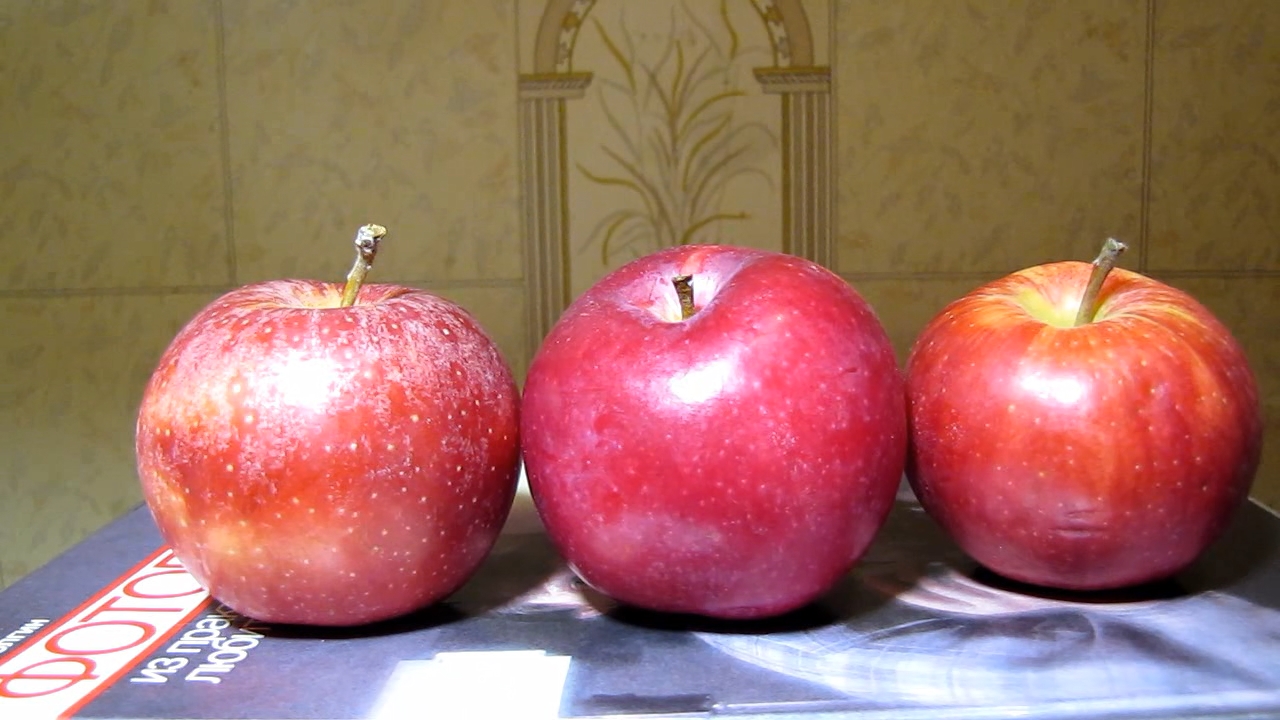
Red apple and ammonia |

|
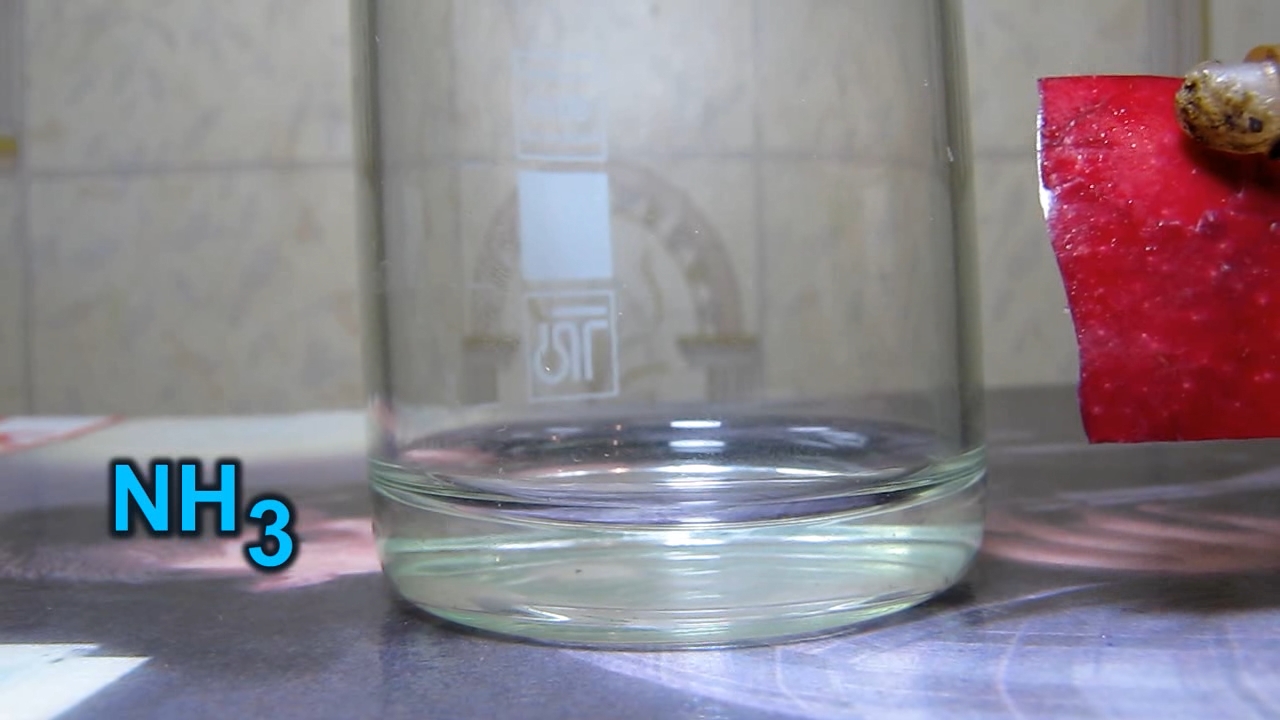
|

|

|
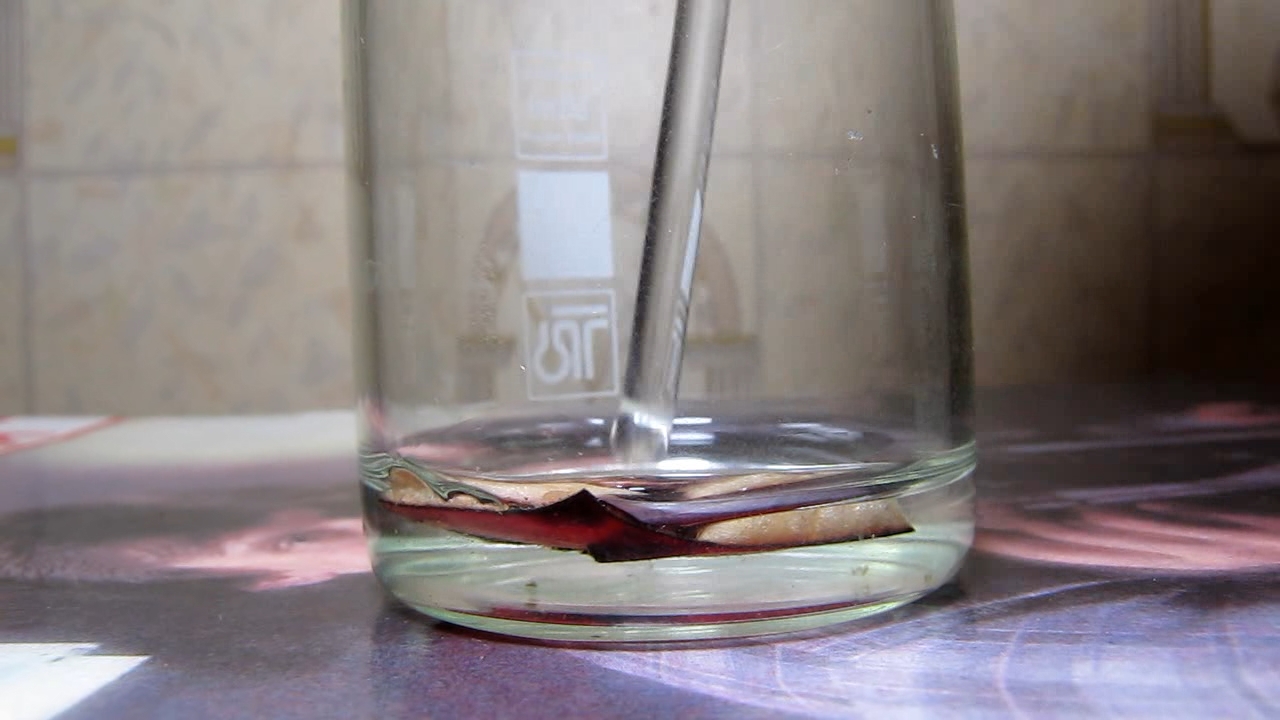
|
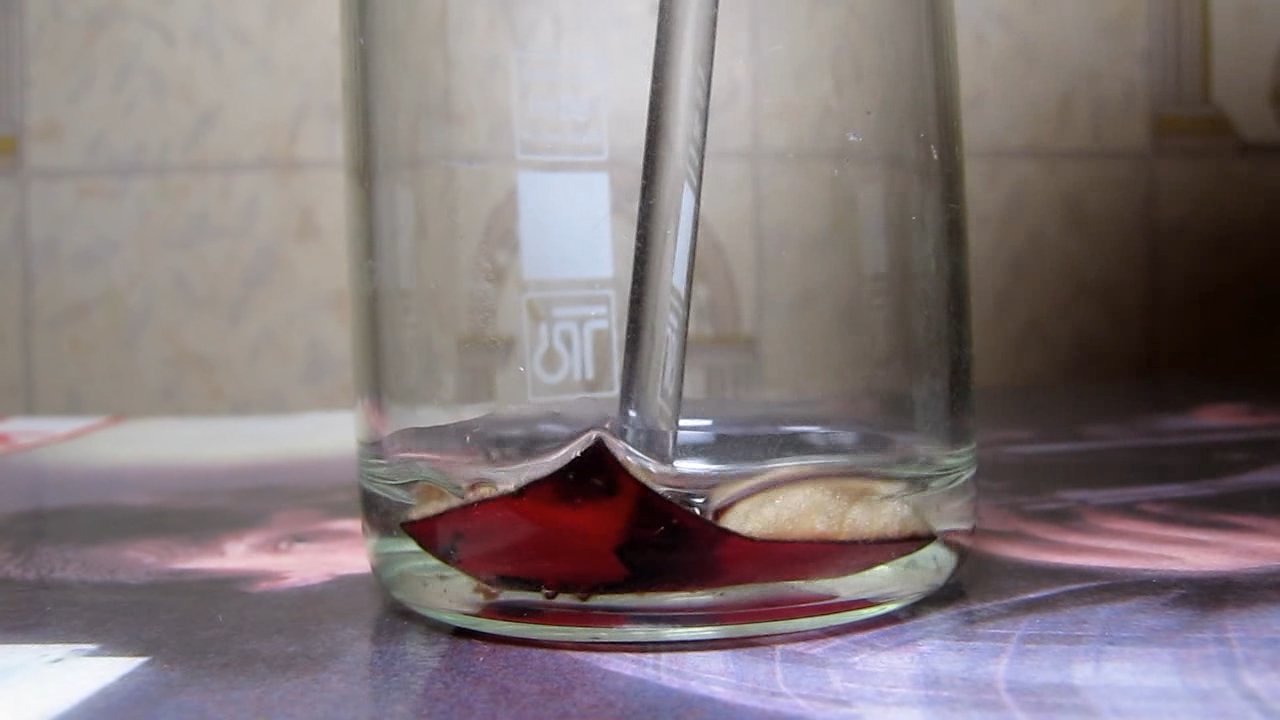
|

|
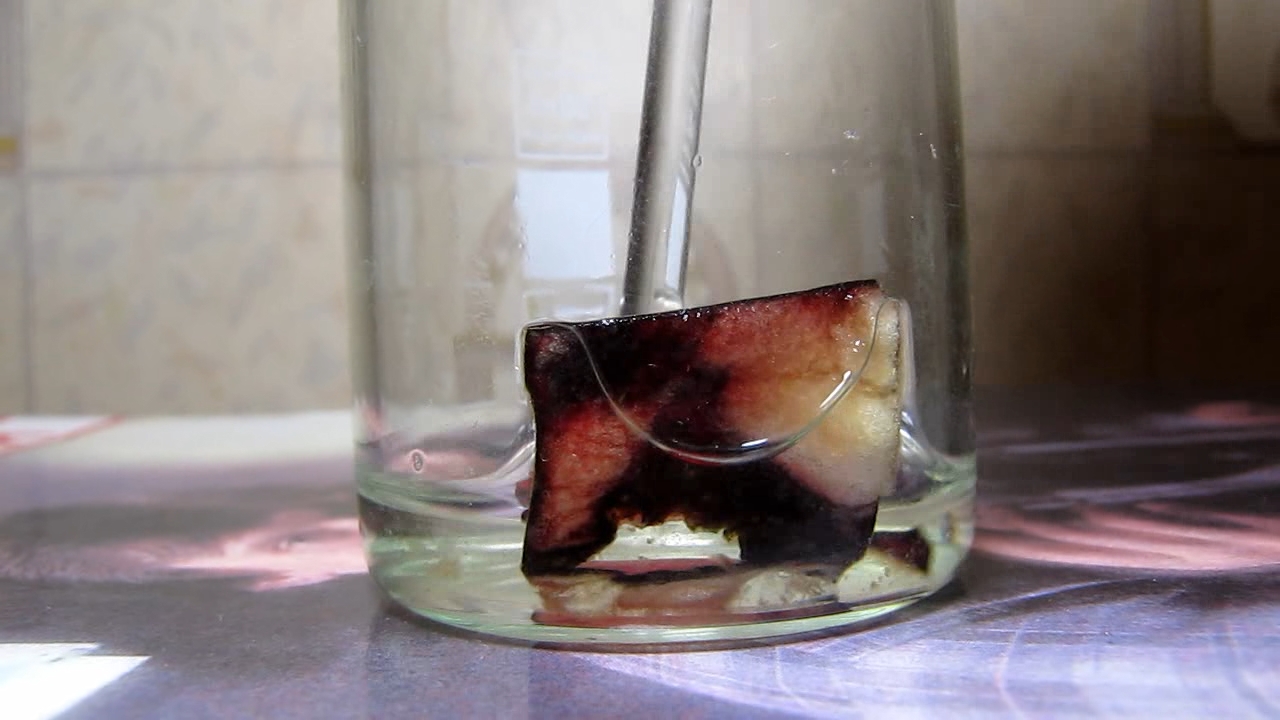
|
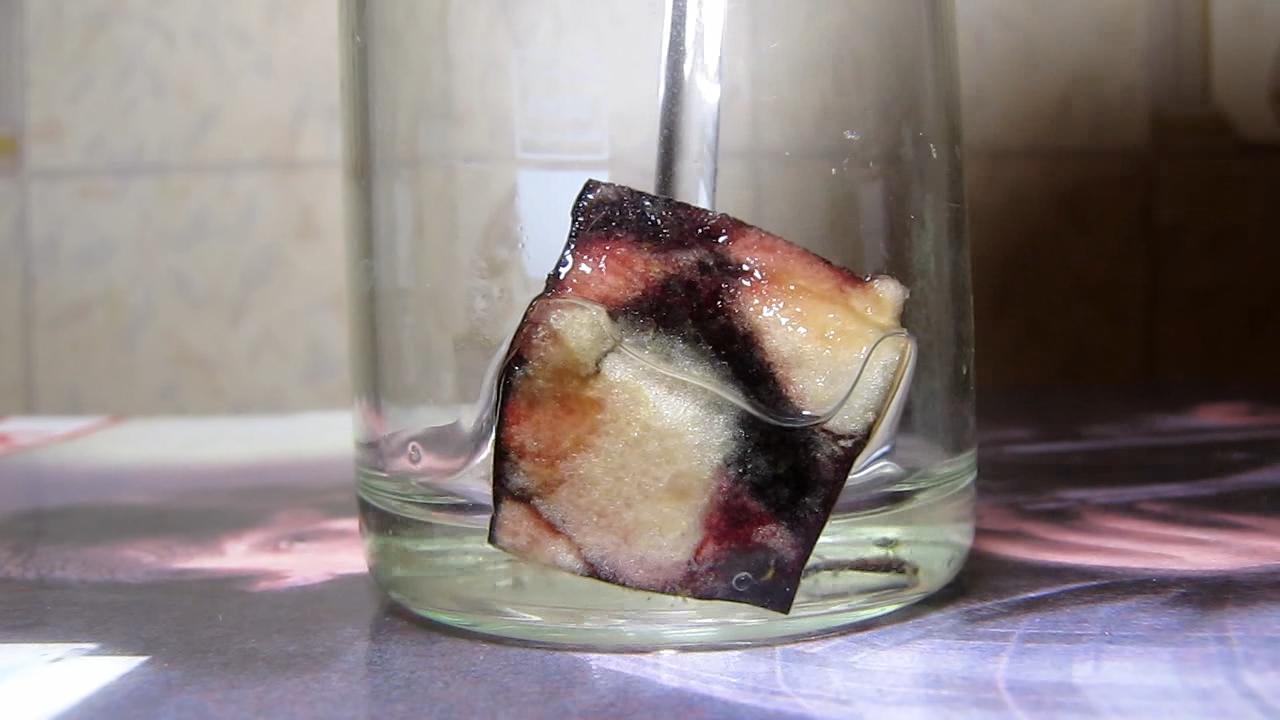
|

|

|
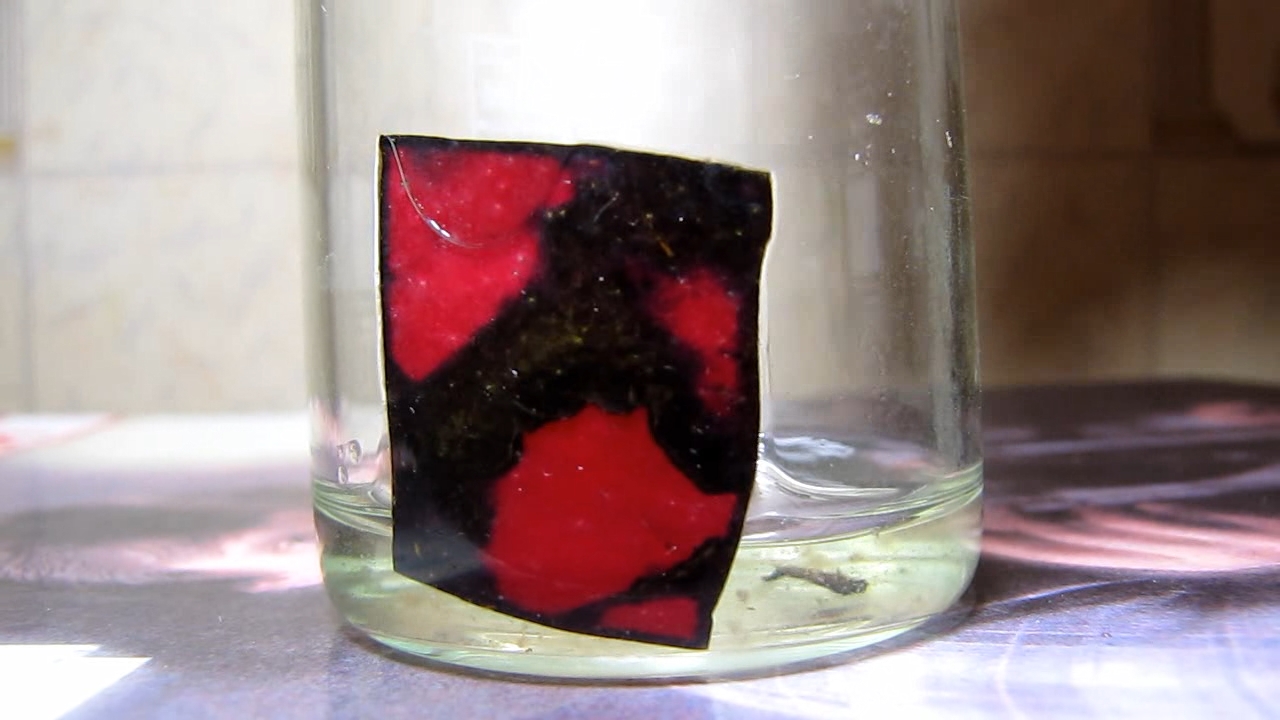
|

|
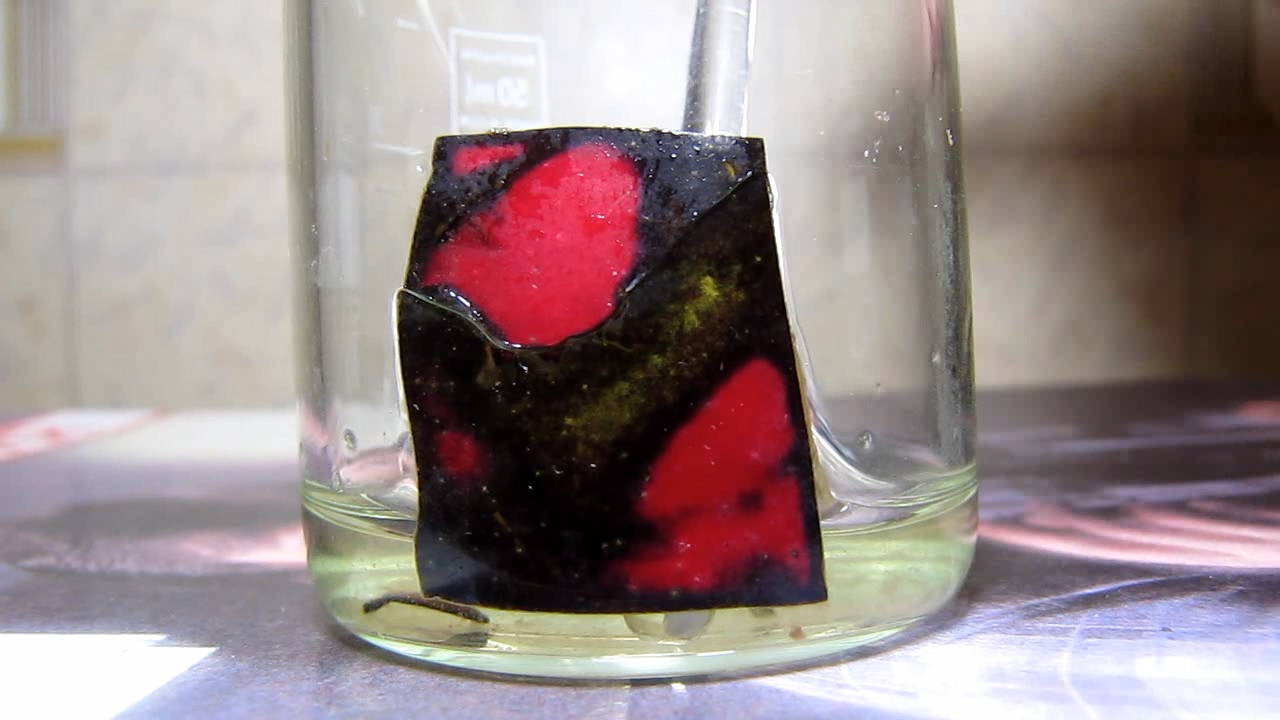
|

|
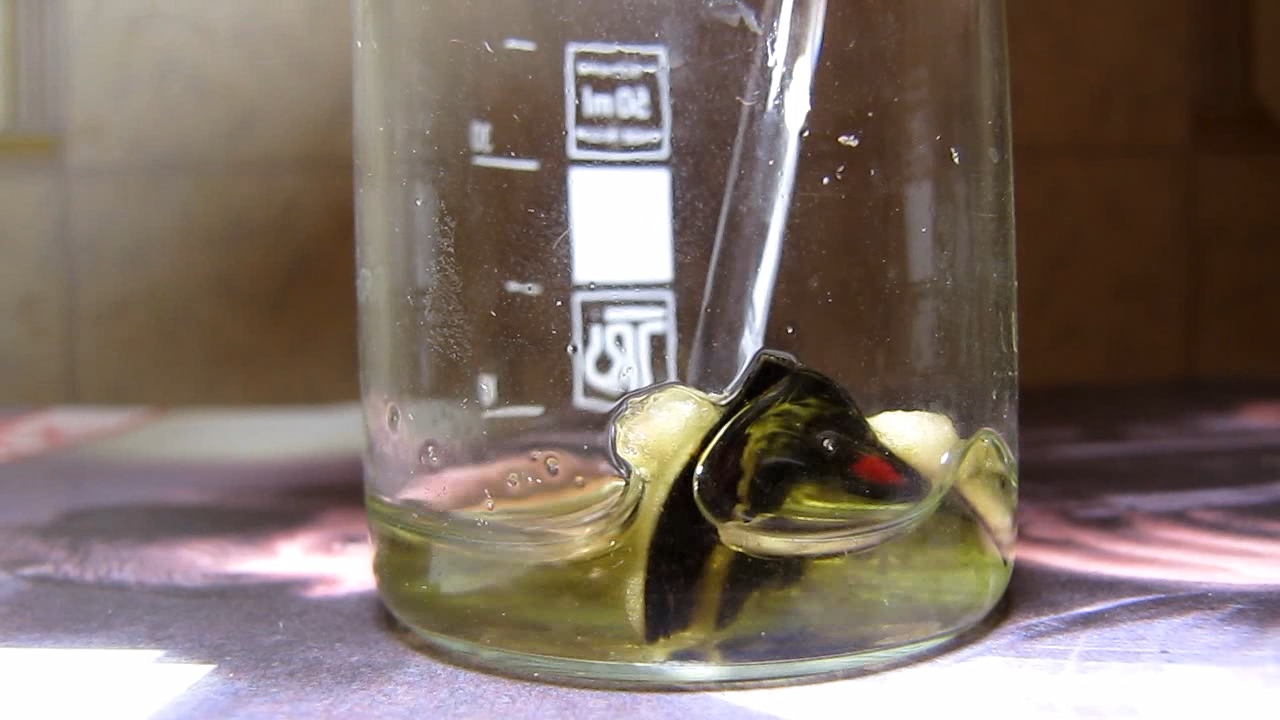
|
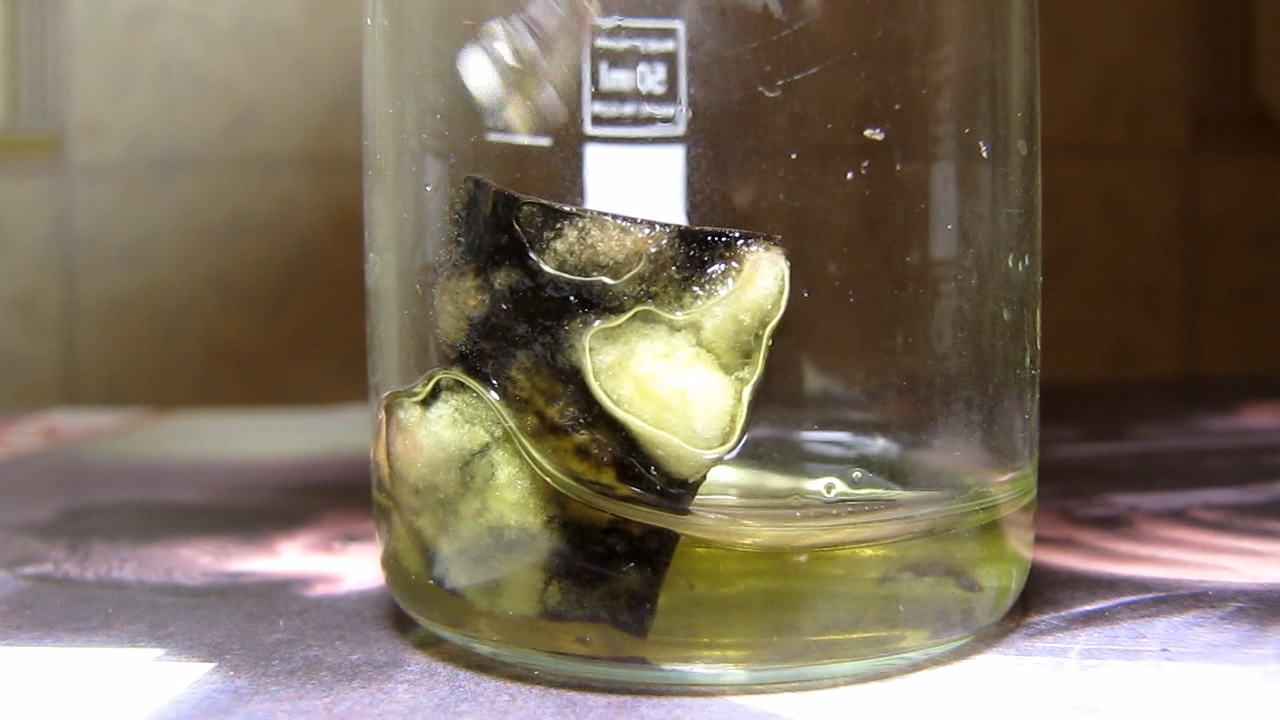
|

|
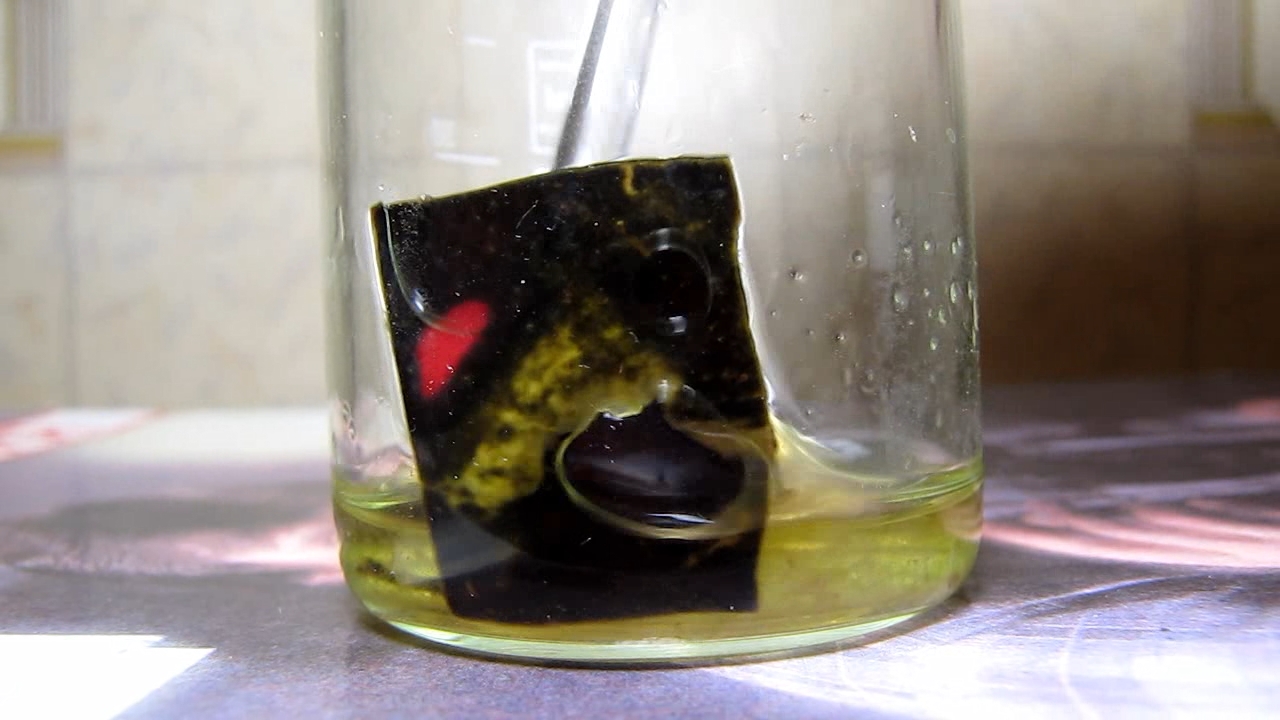
|
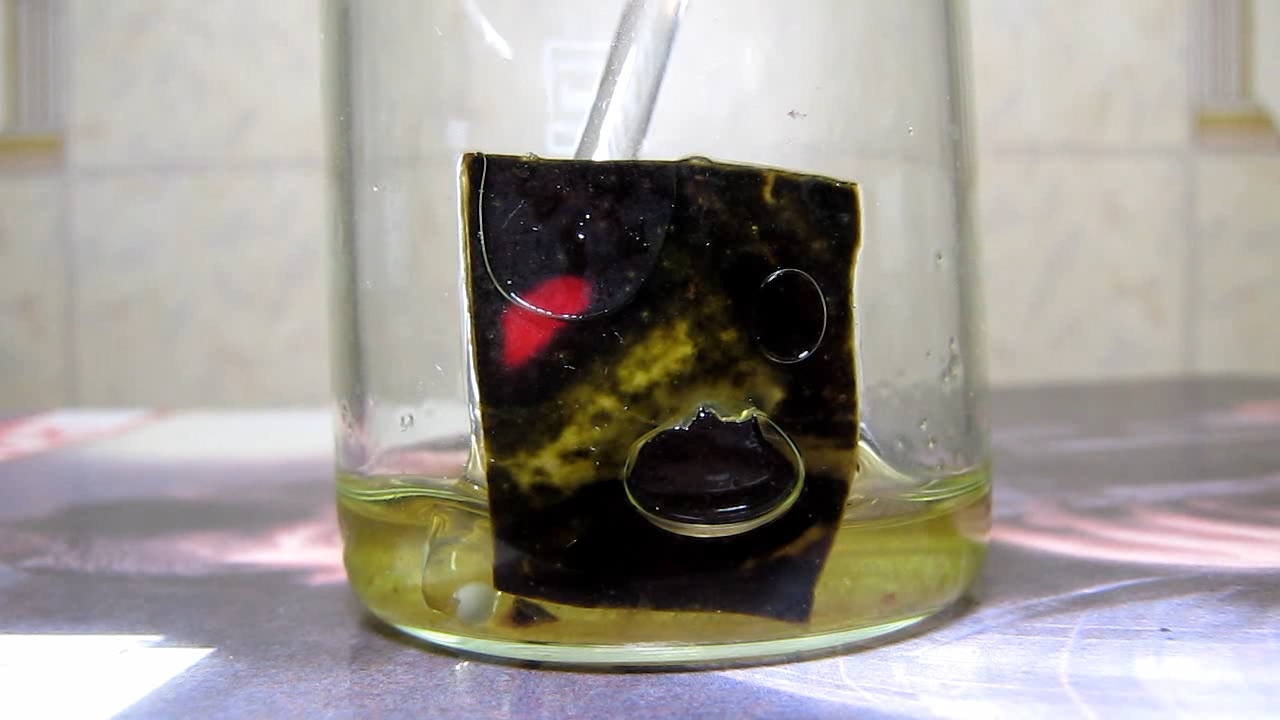
|

|
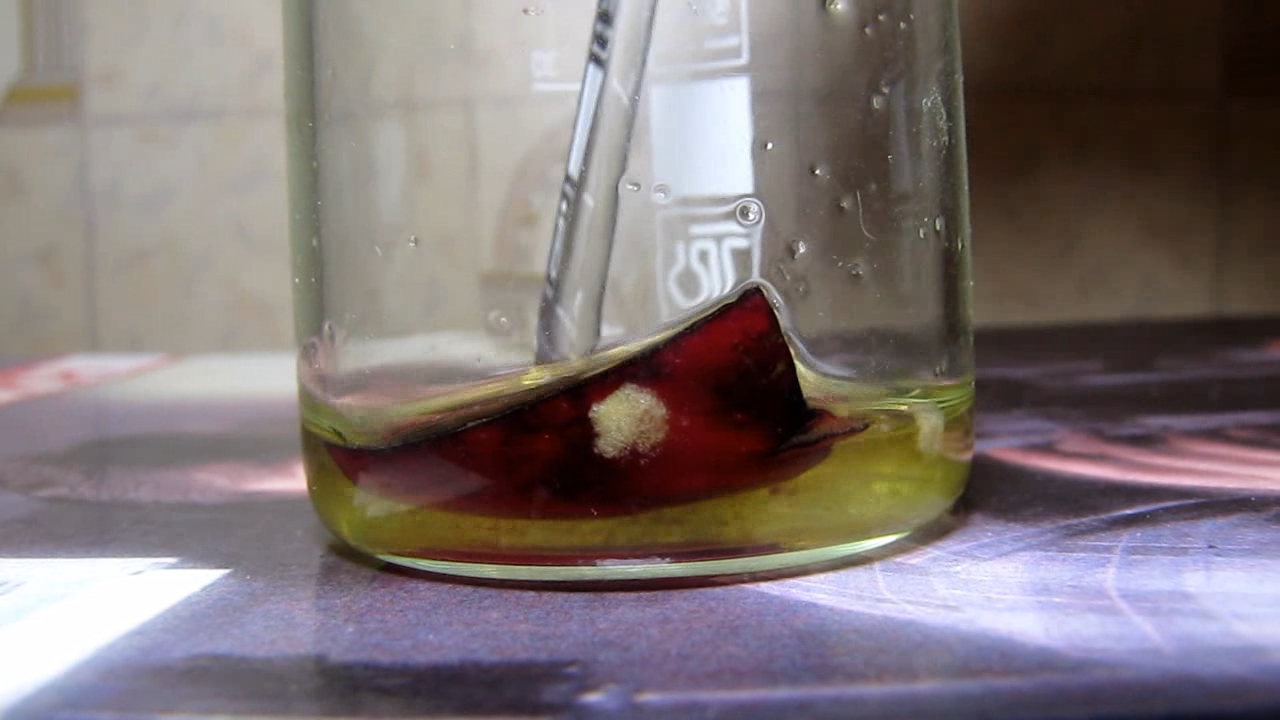
|

|

|
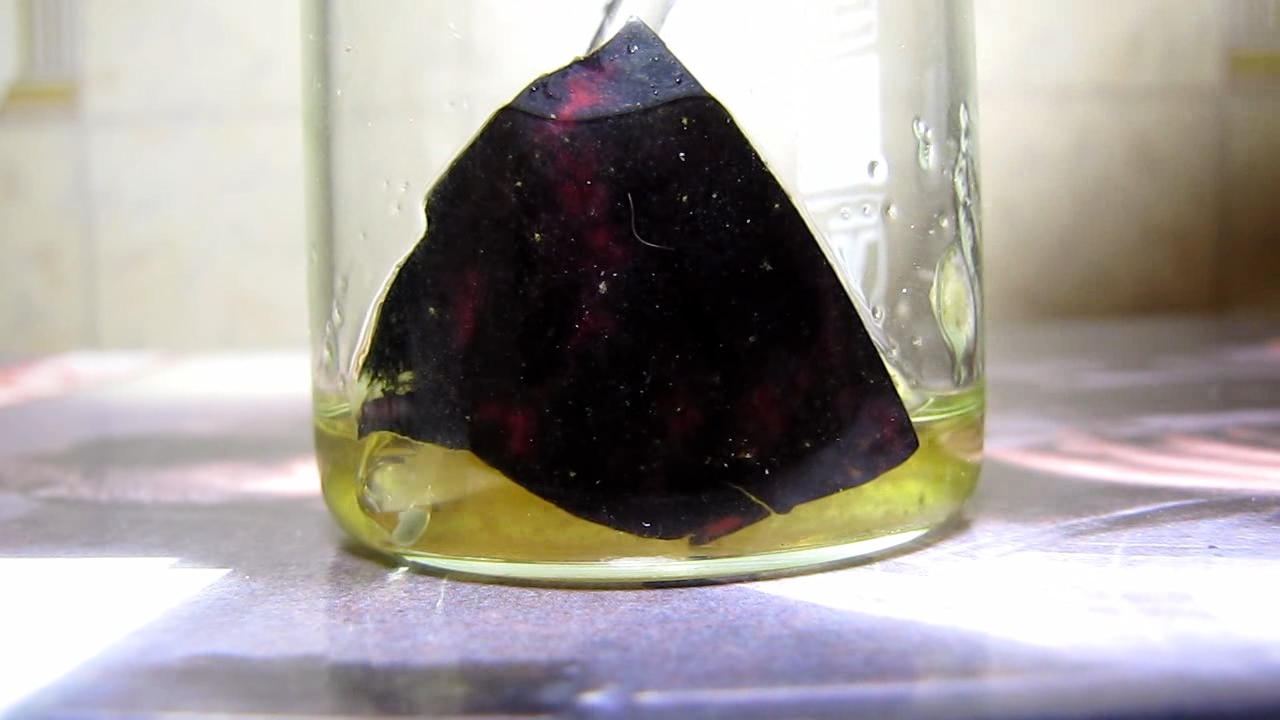
|
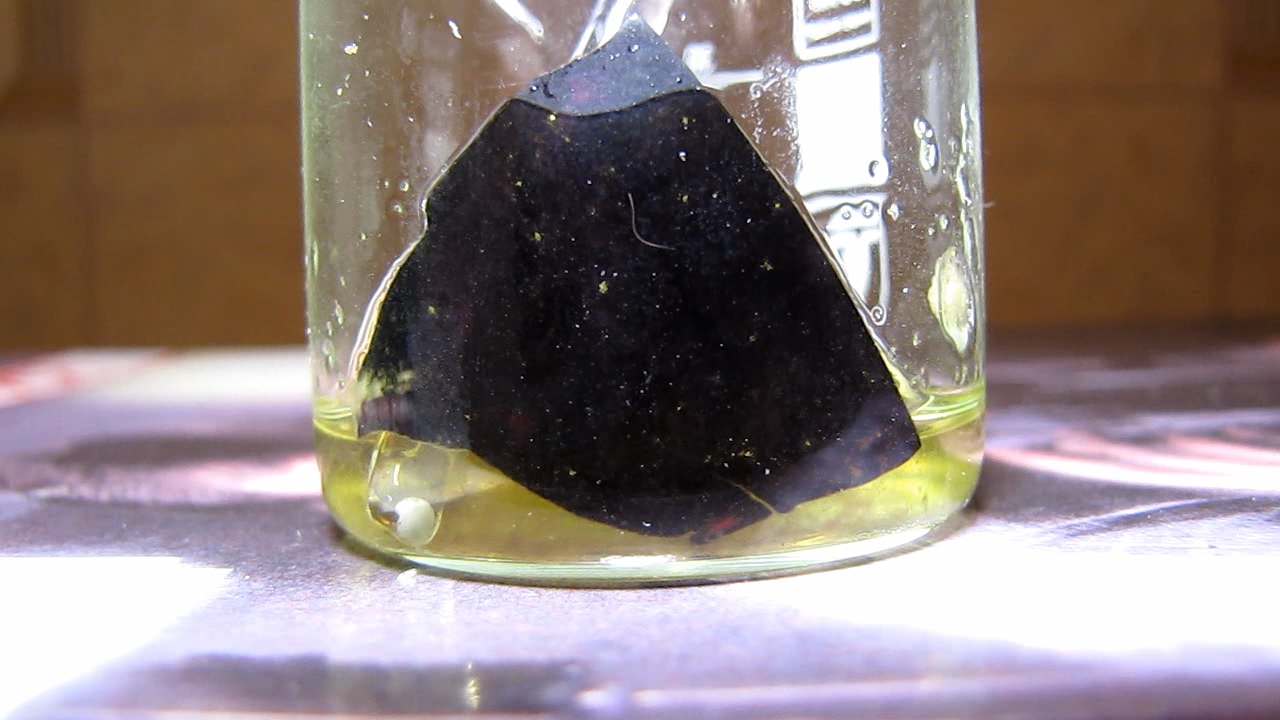
|
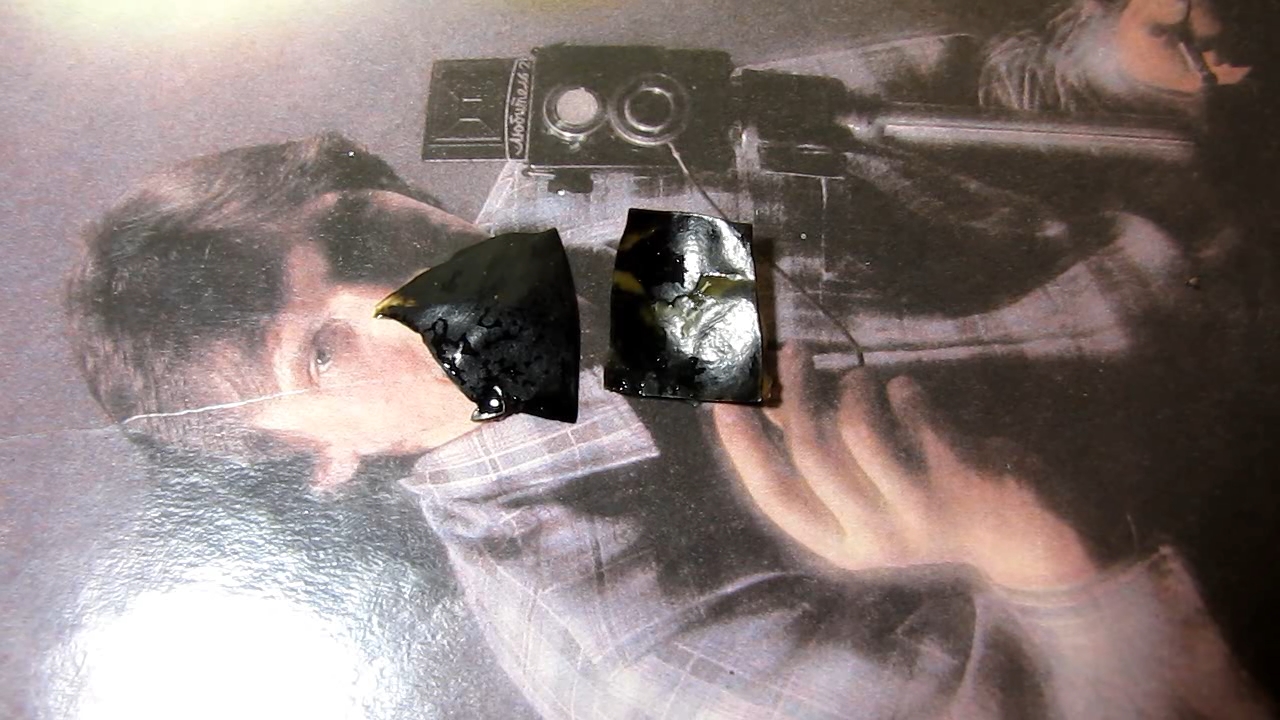
|

|